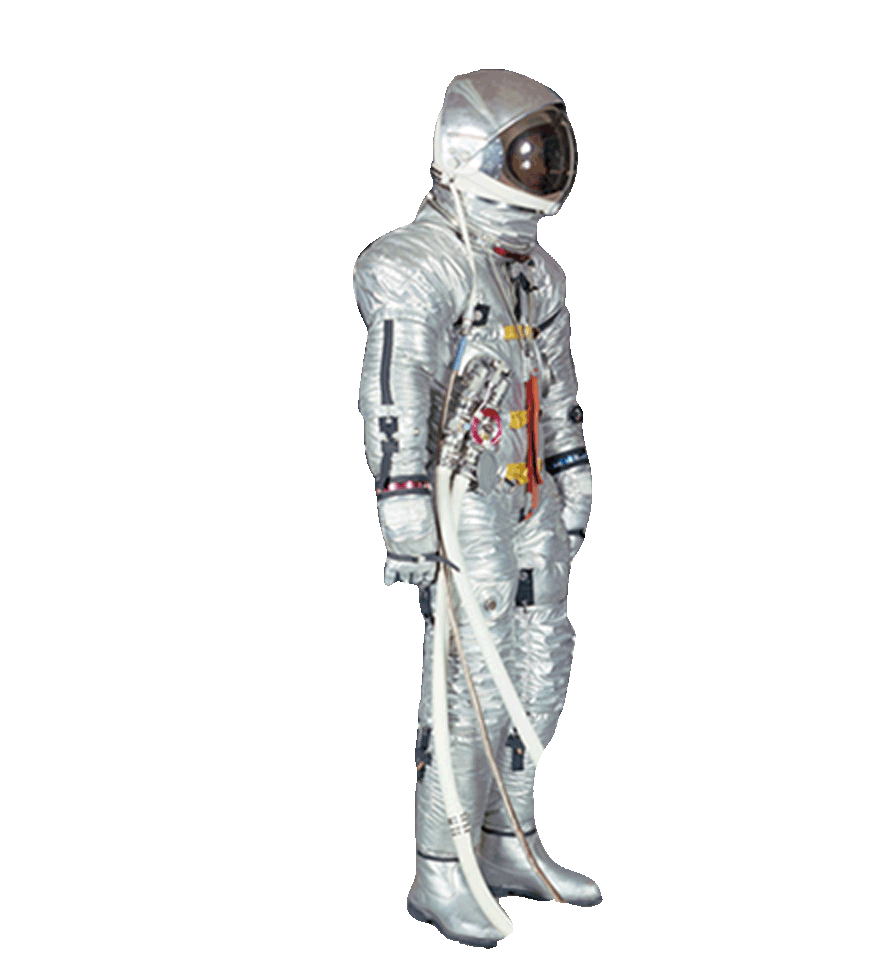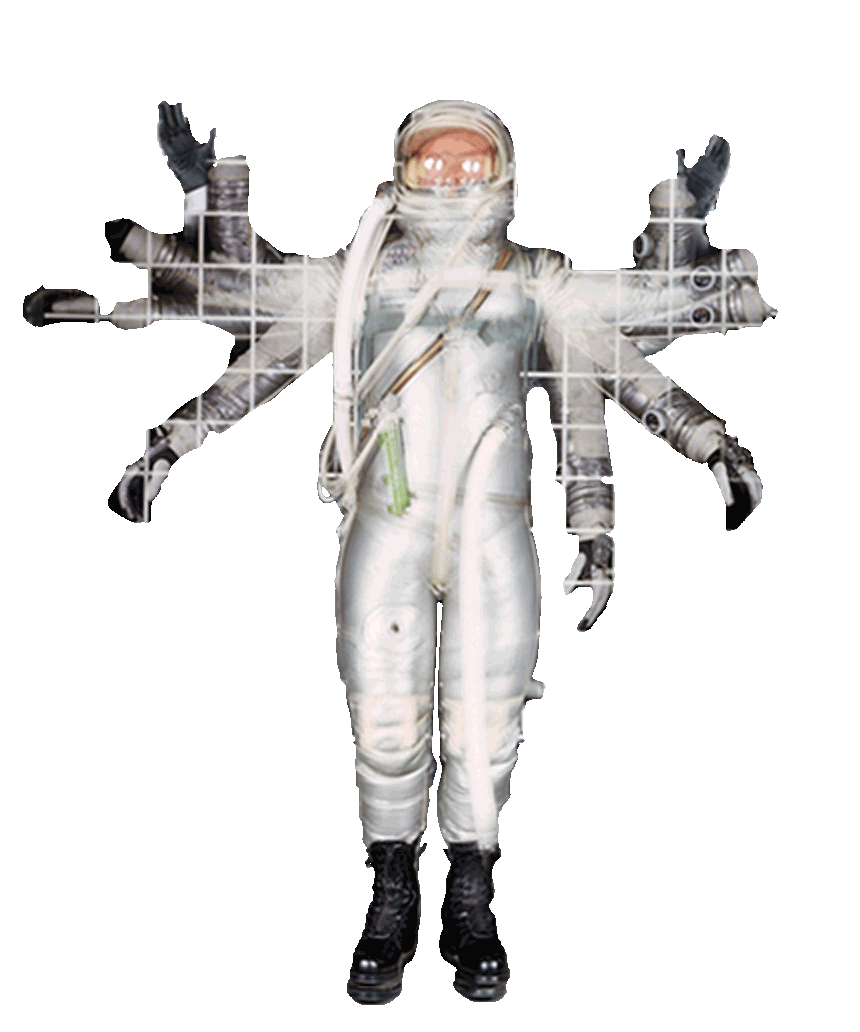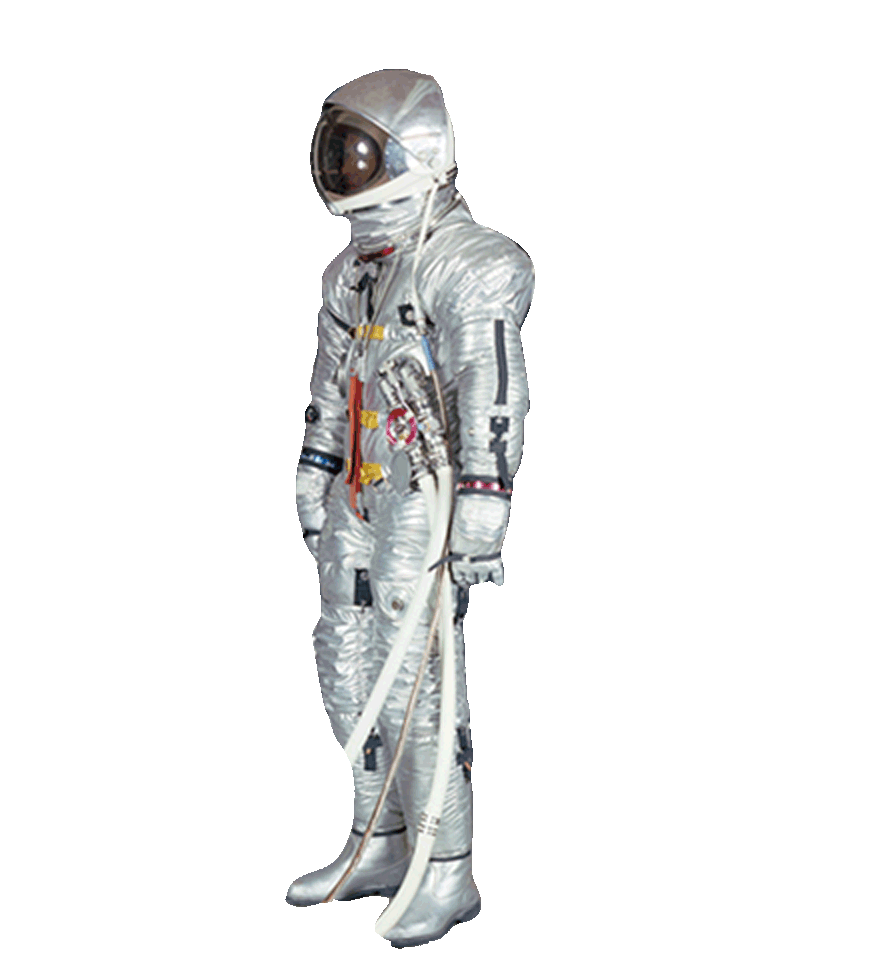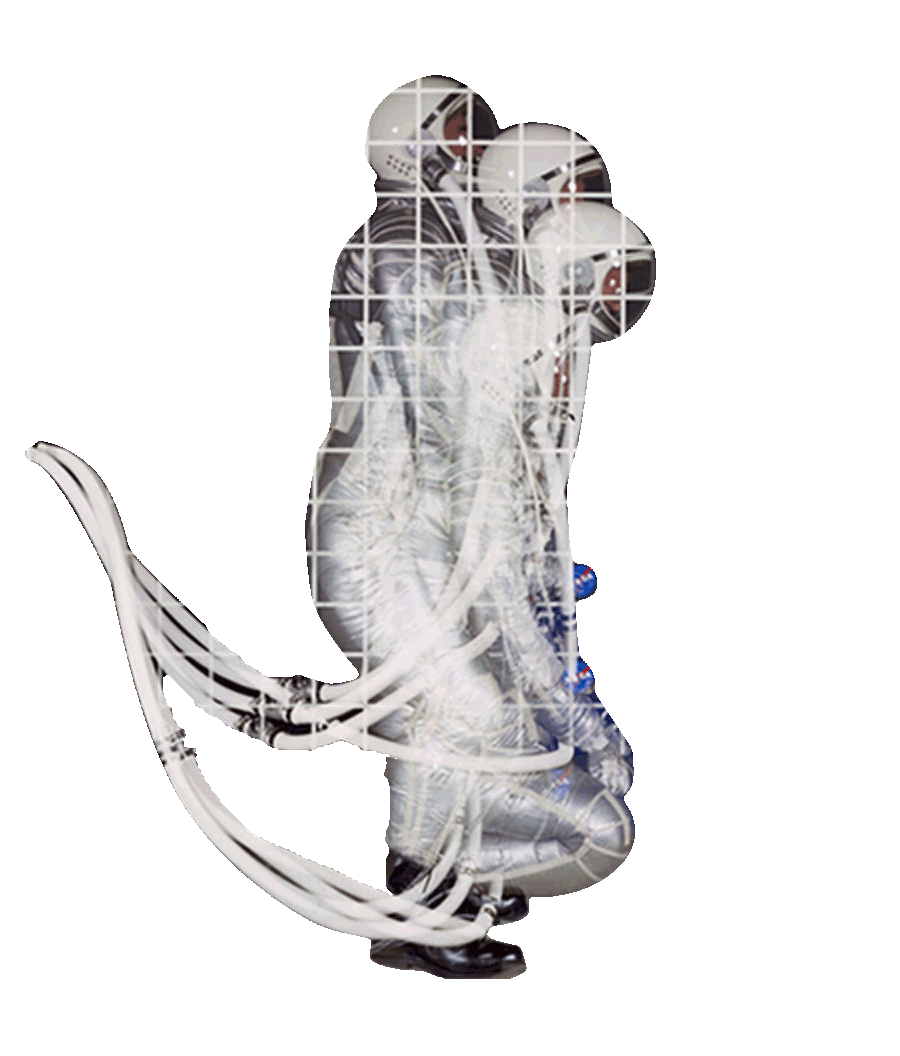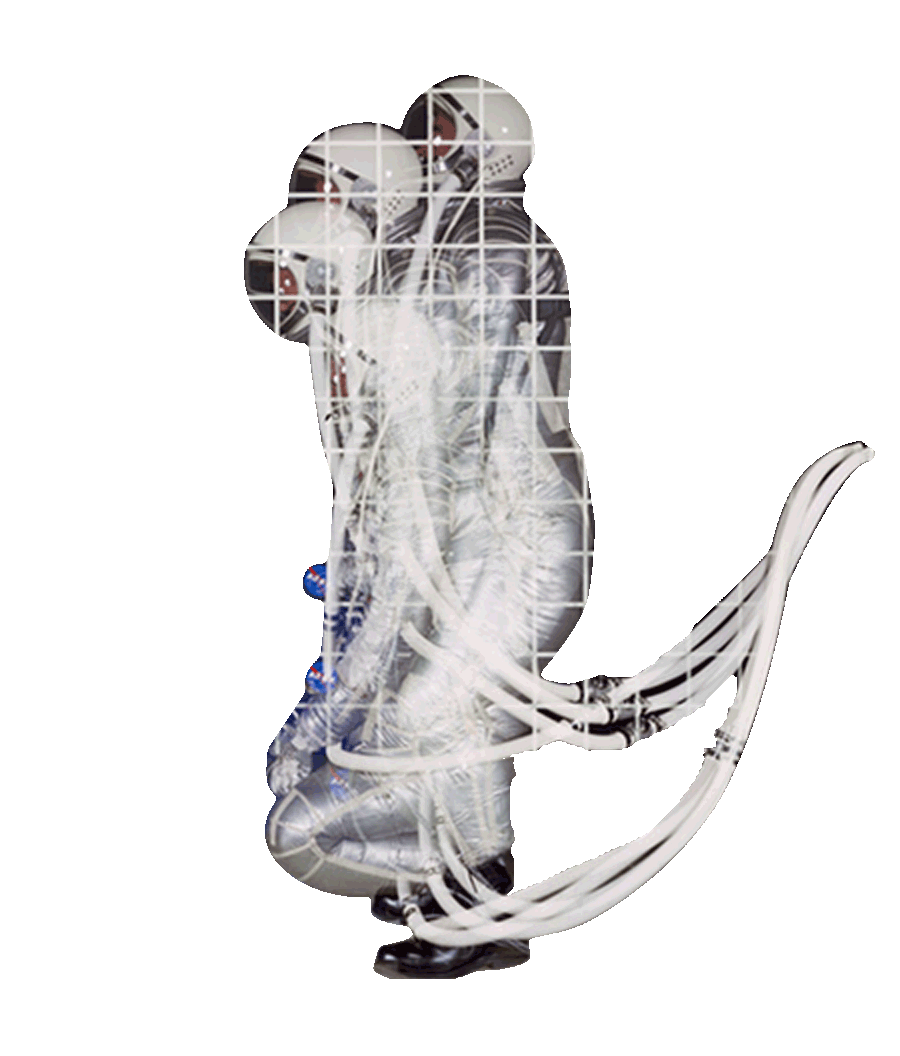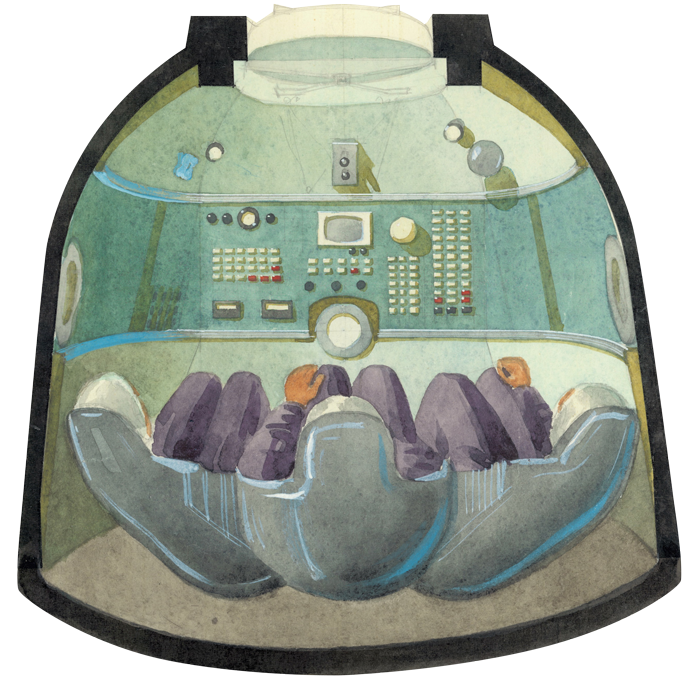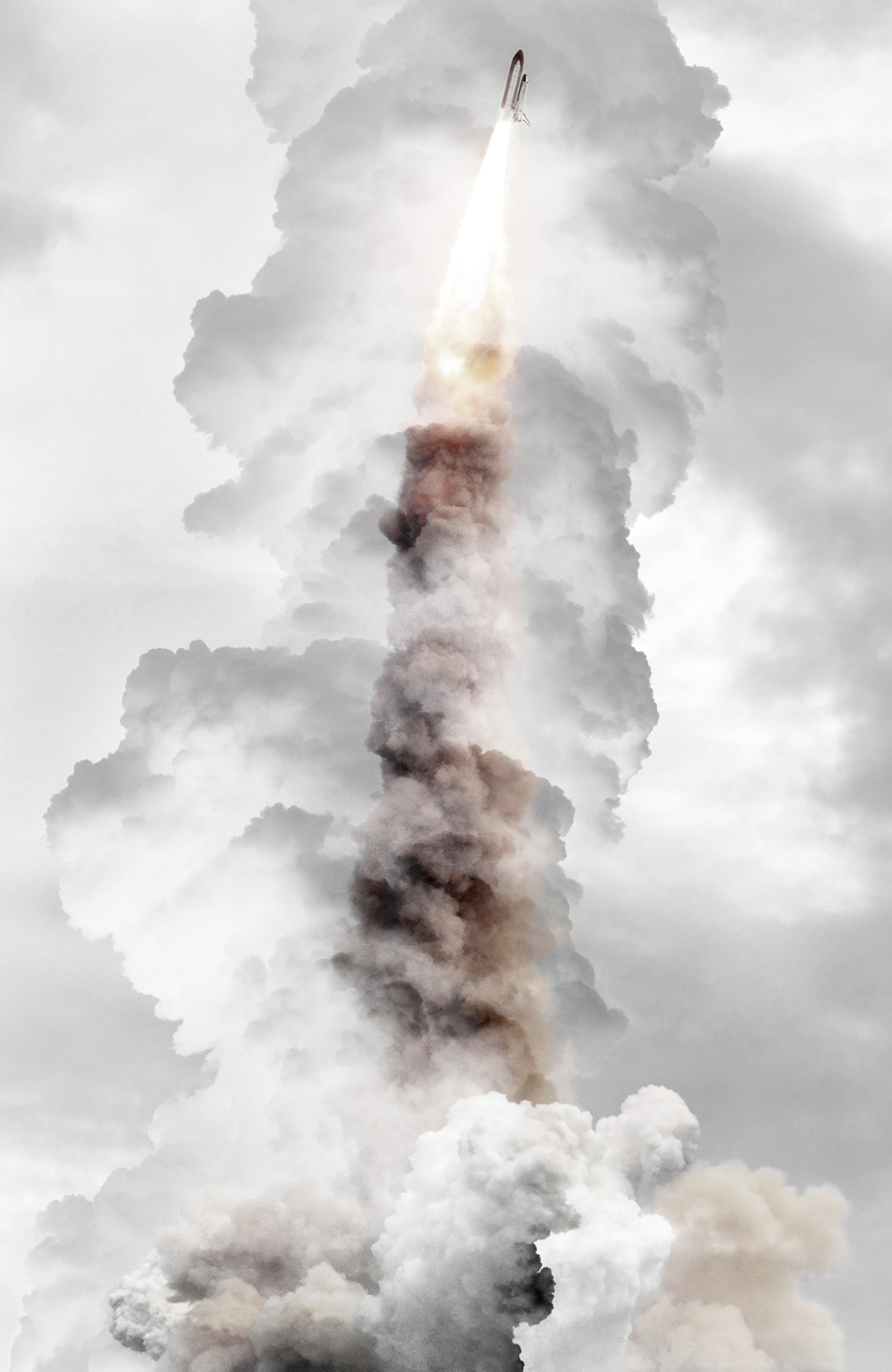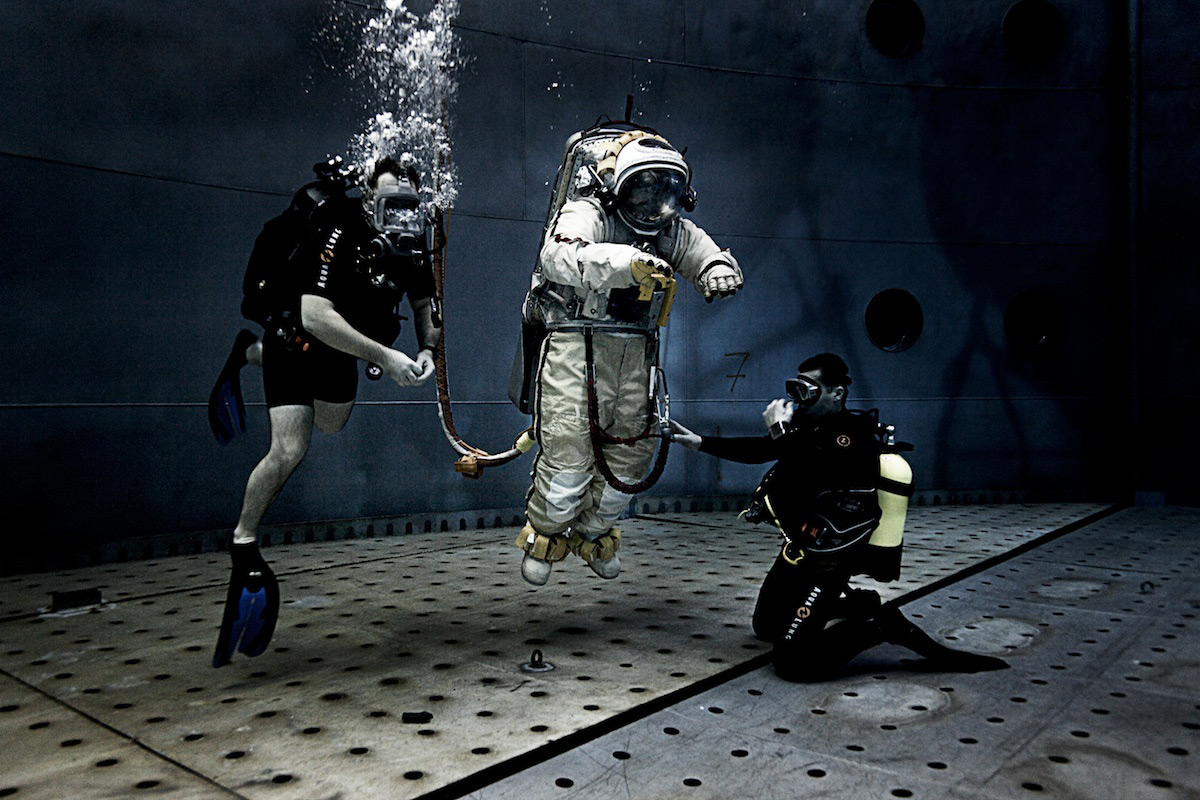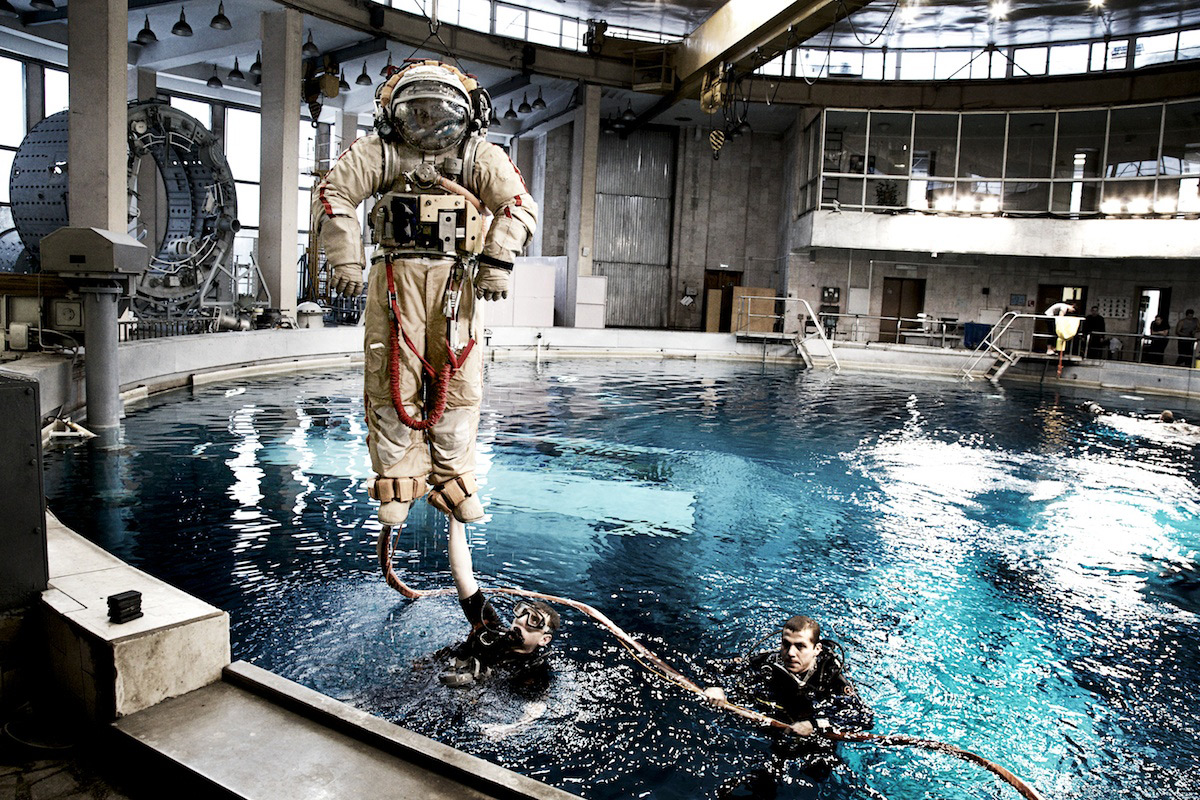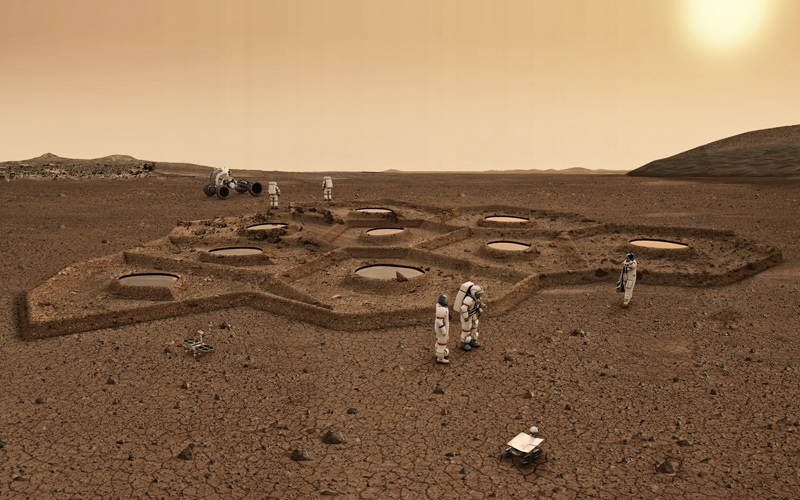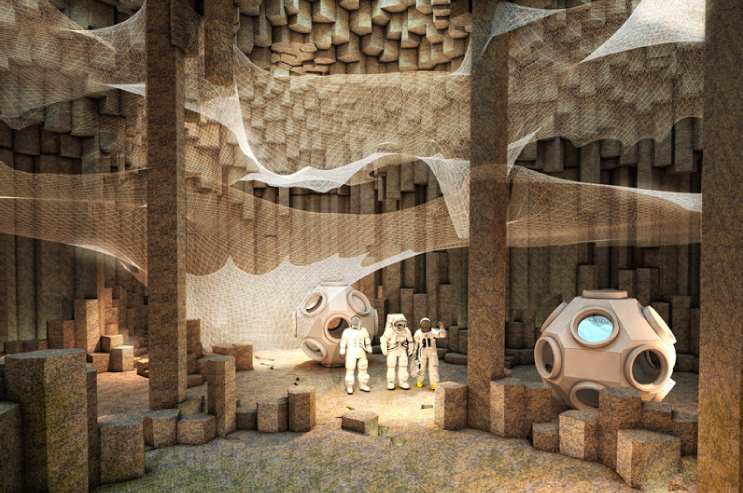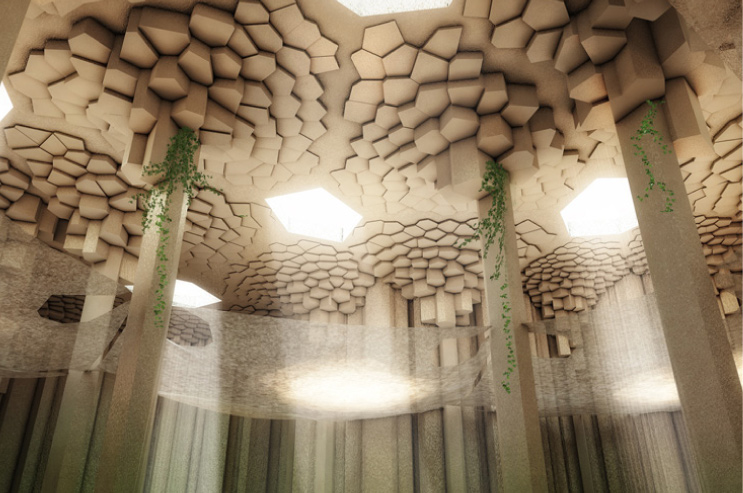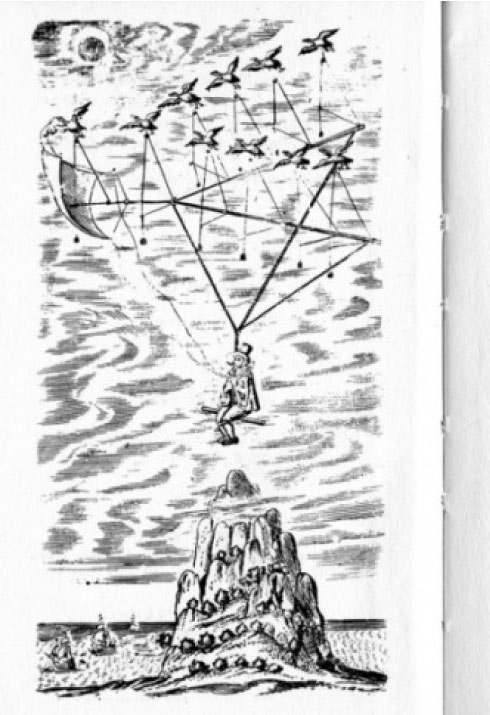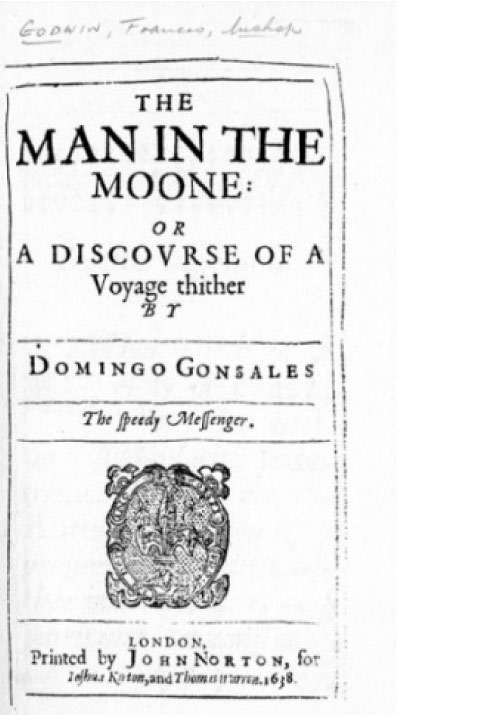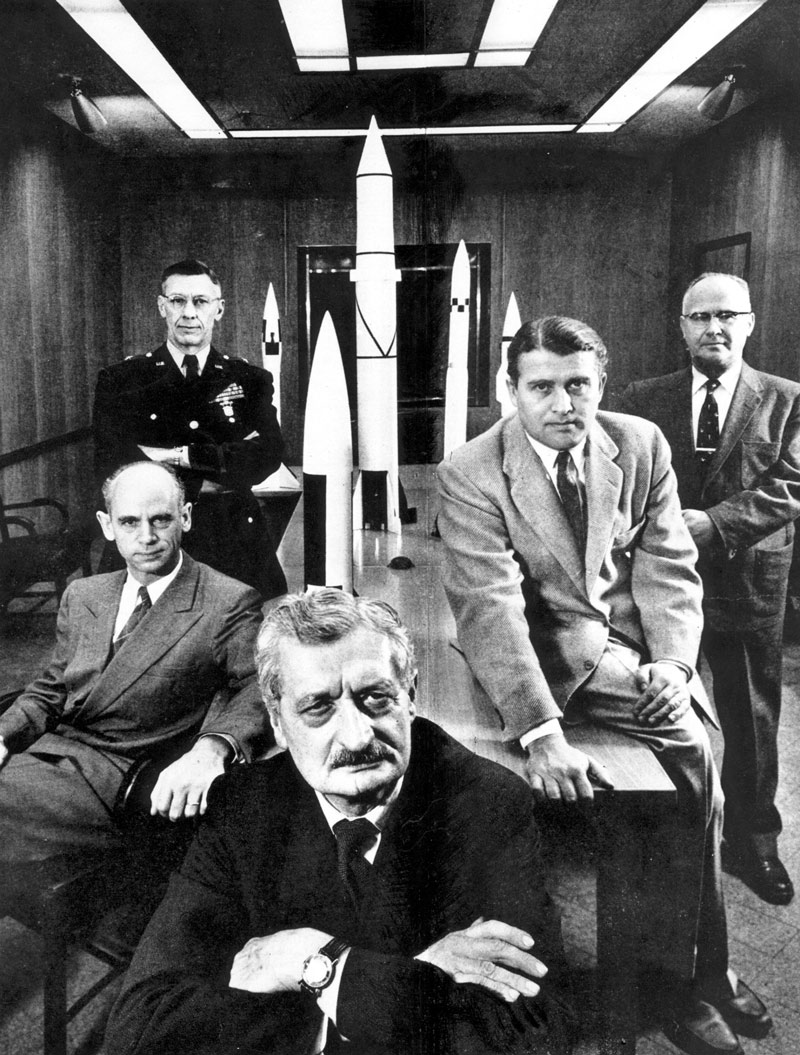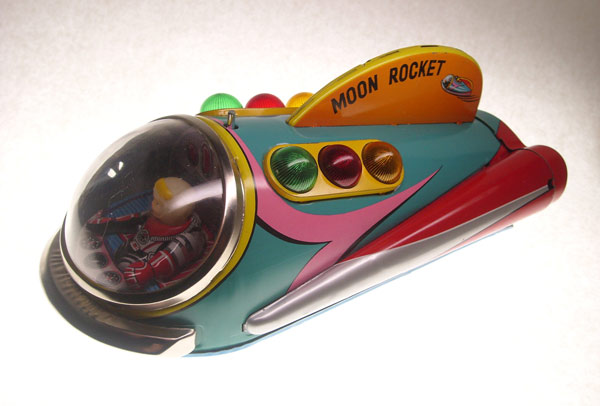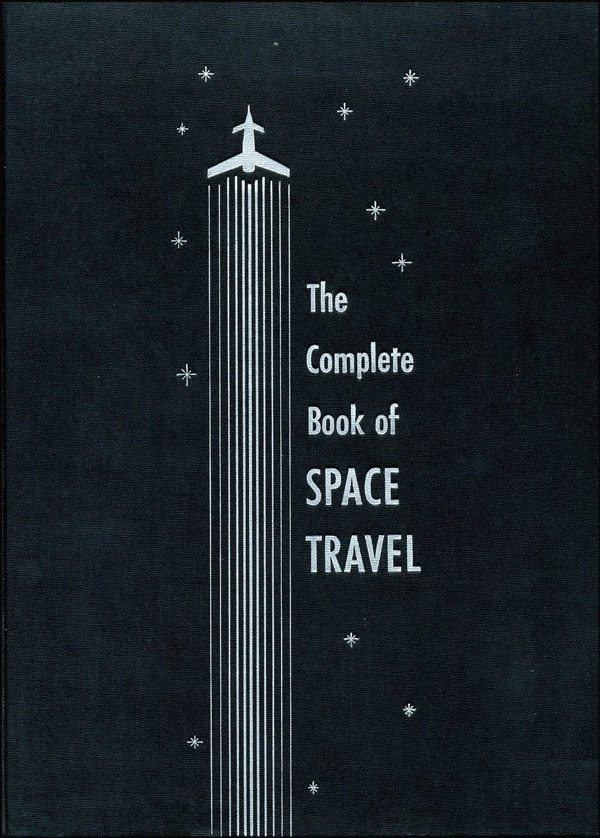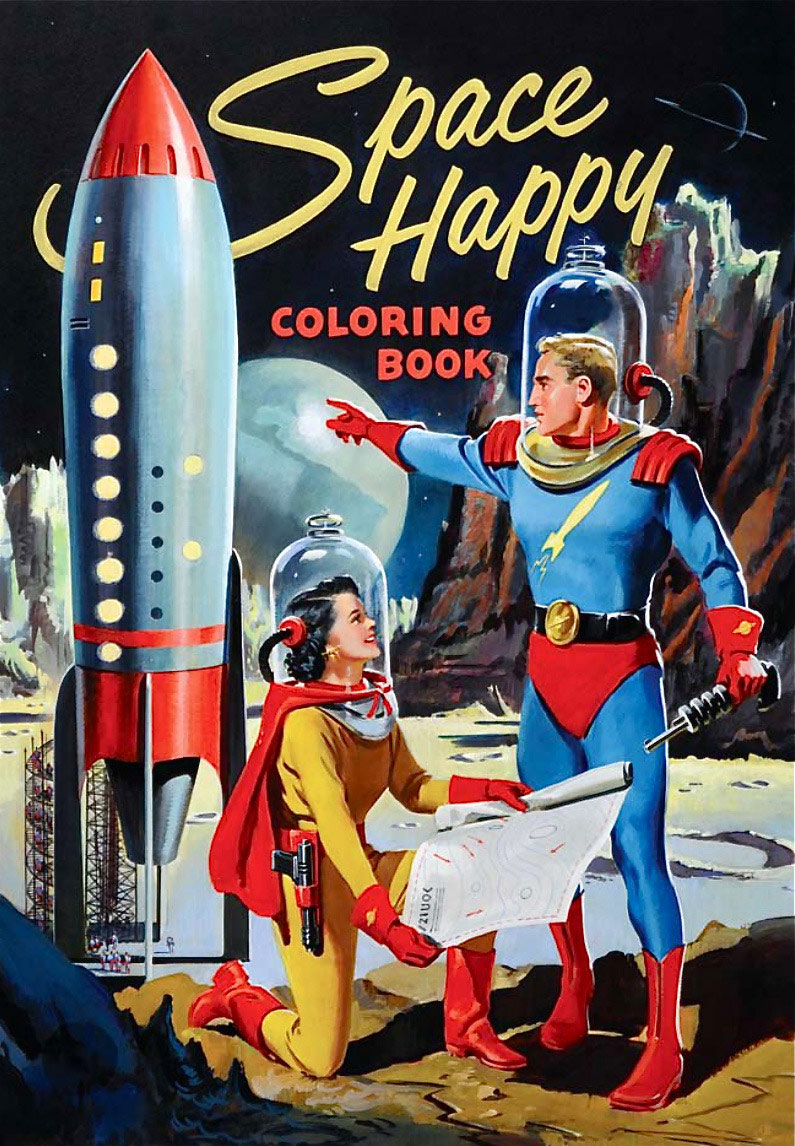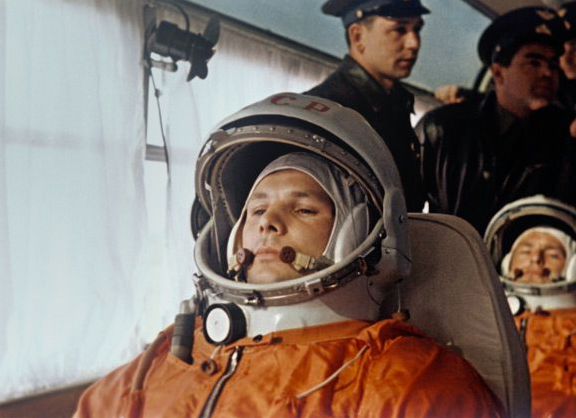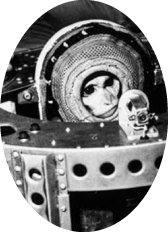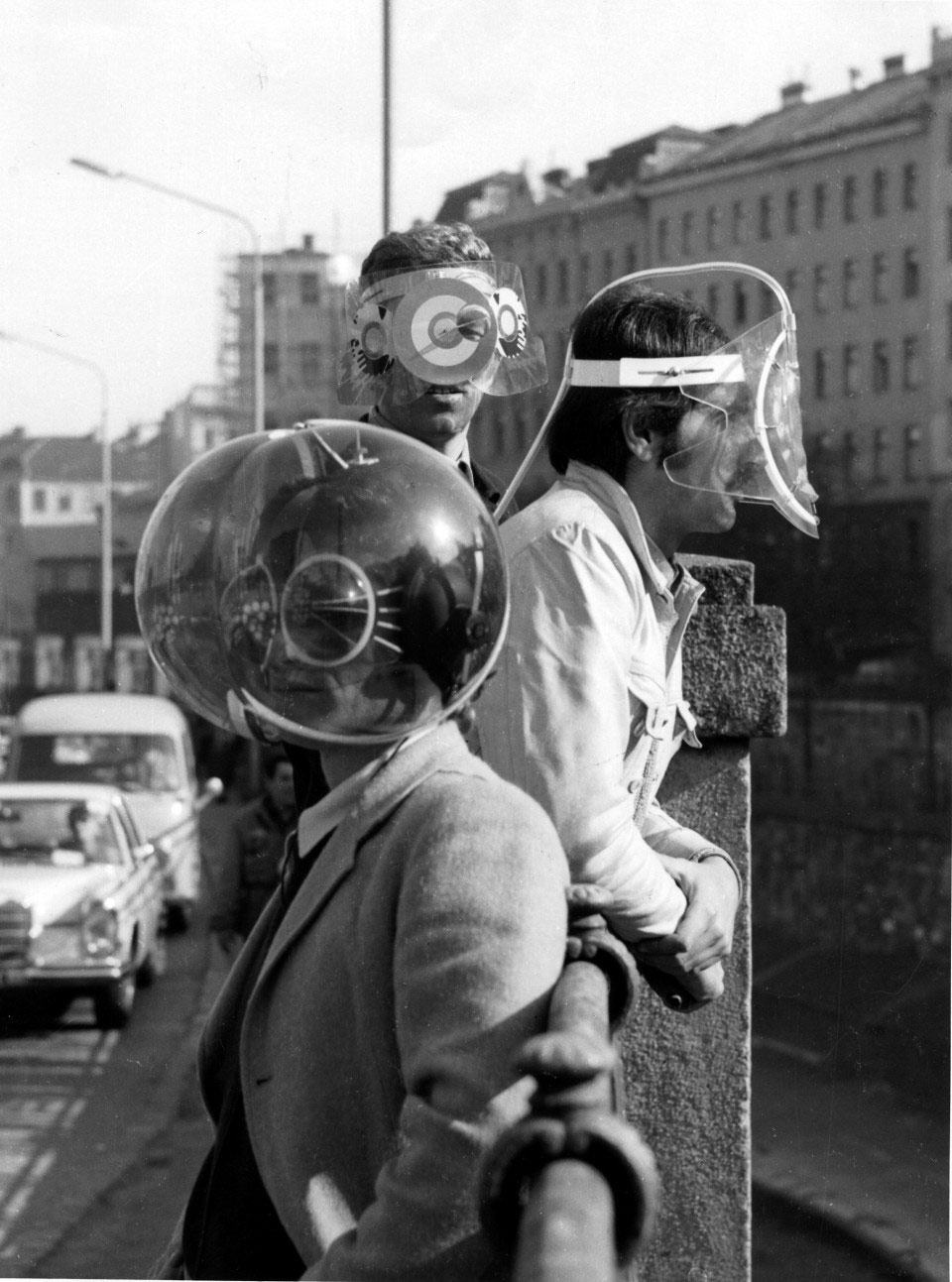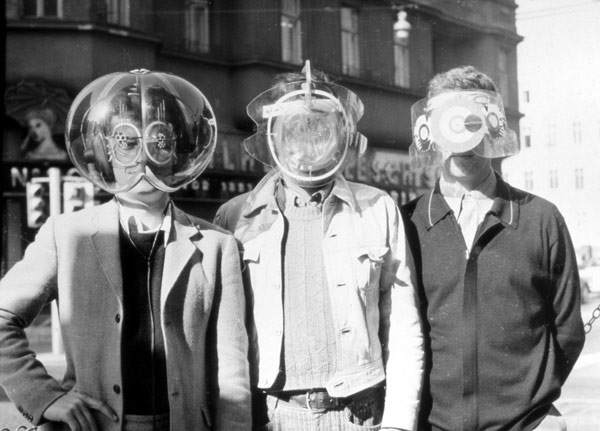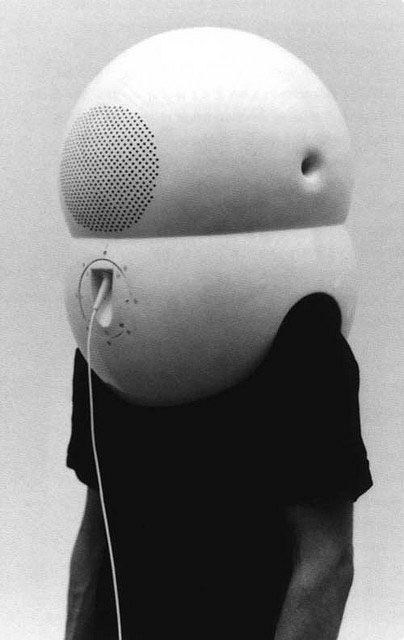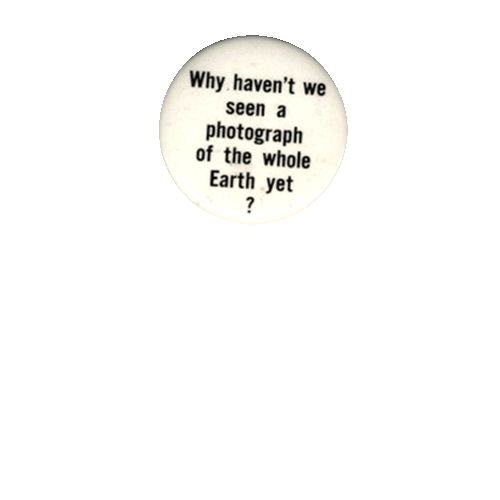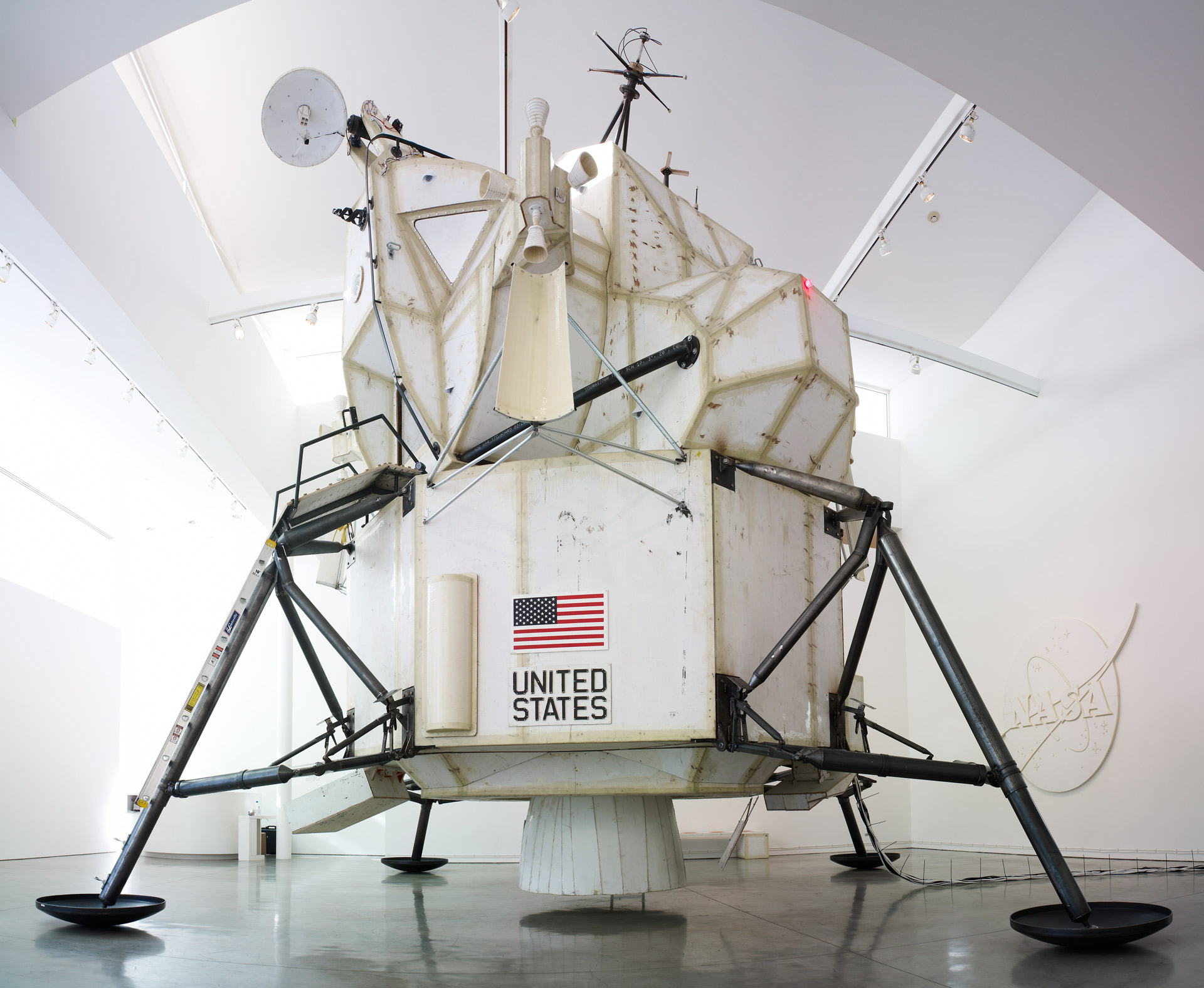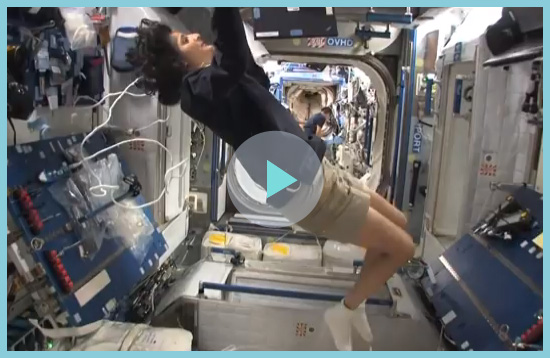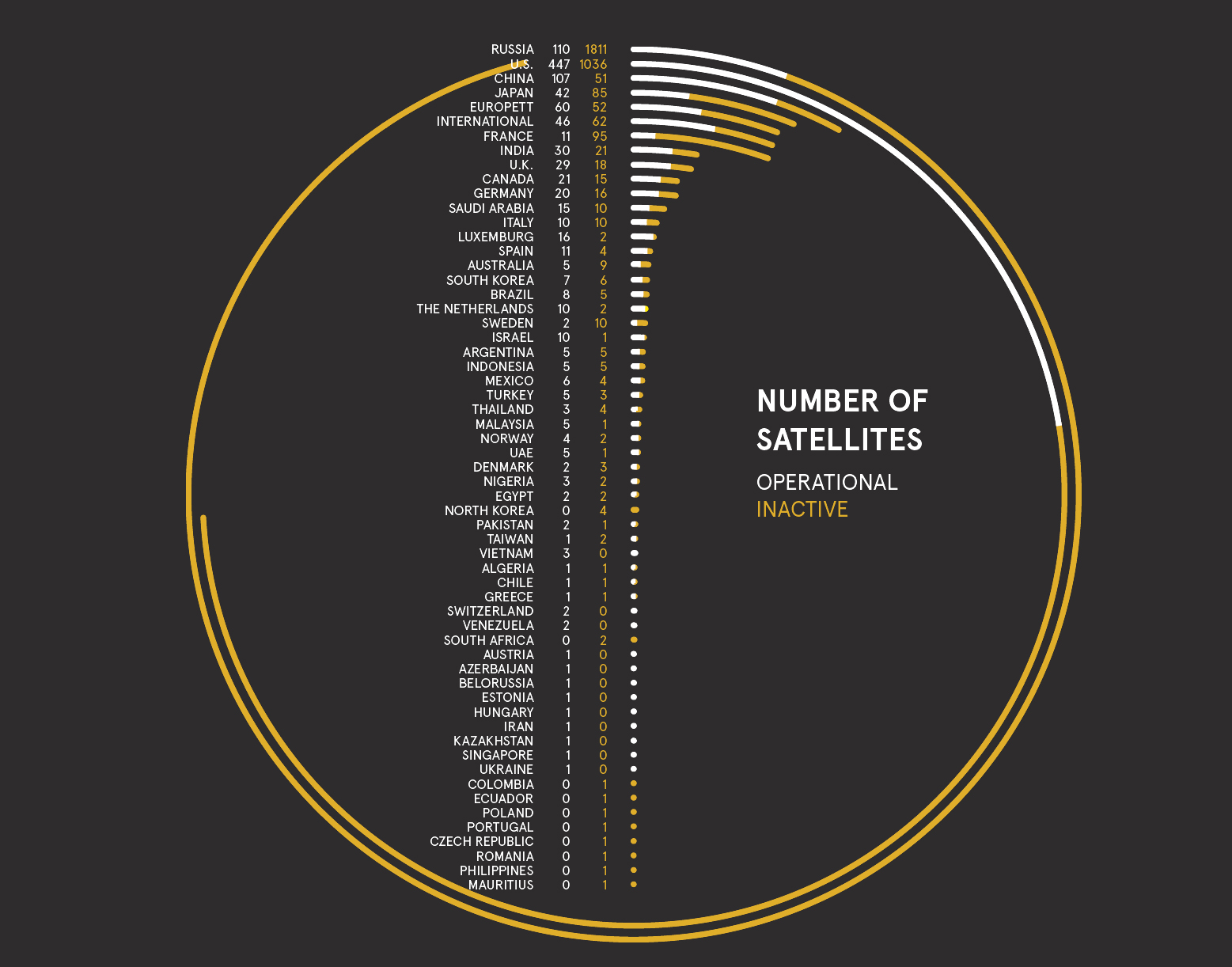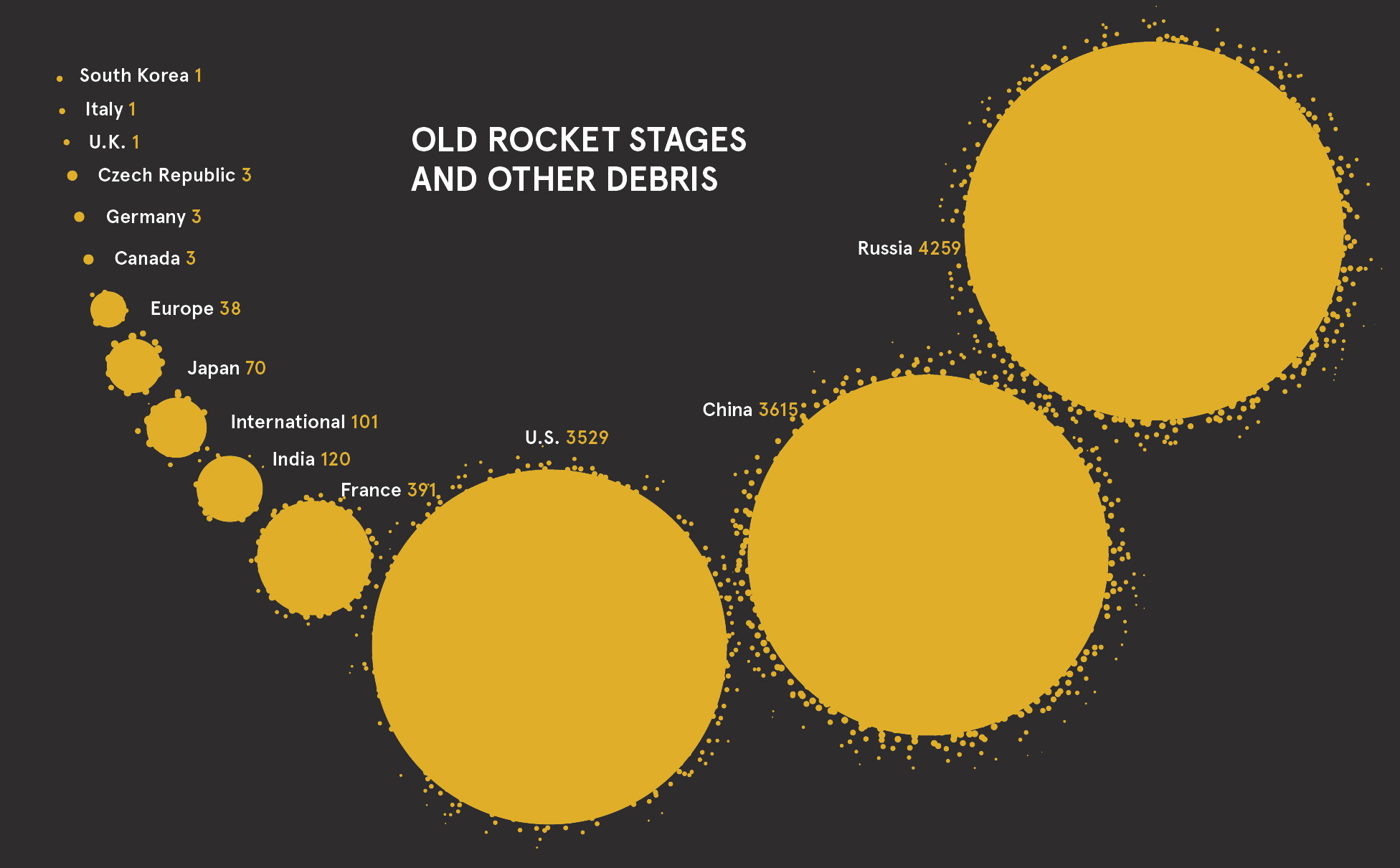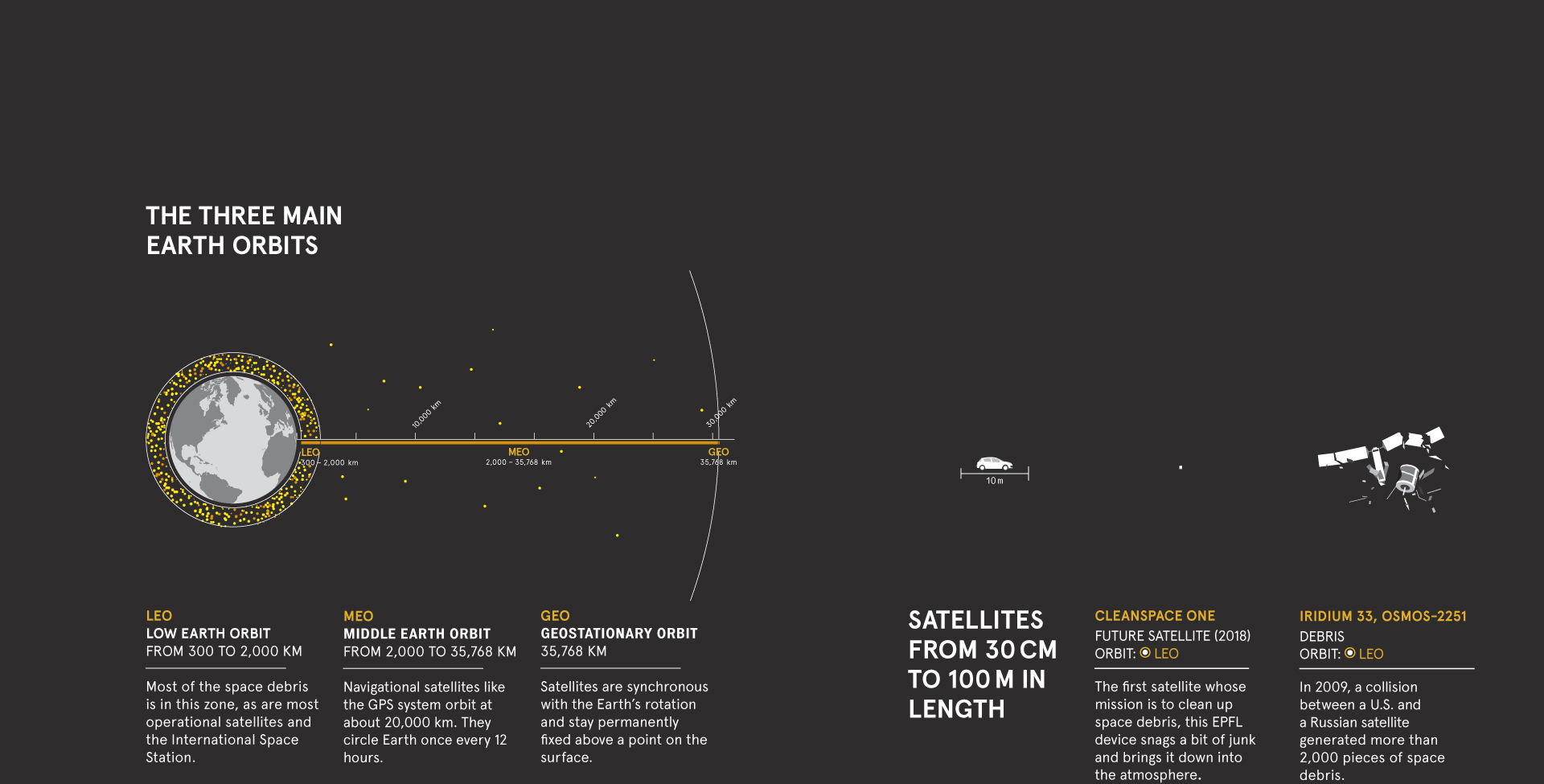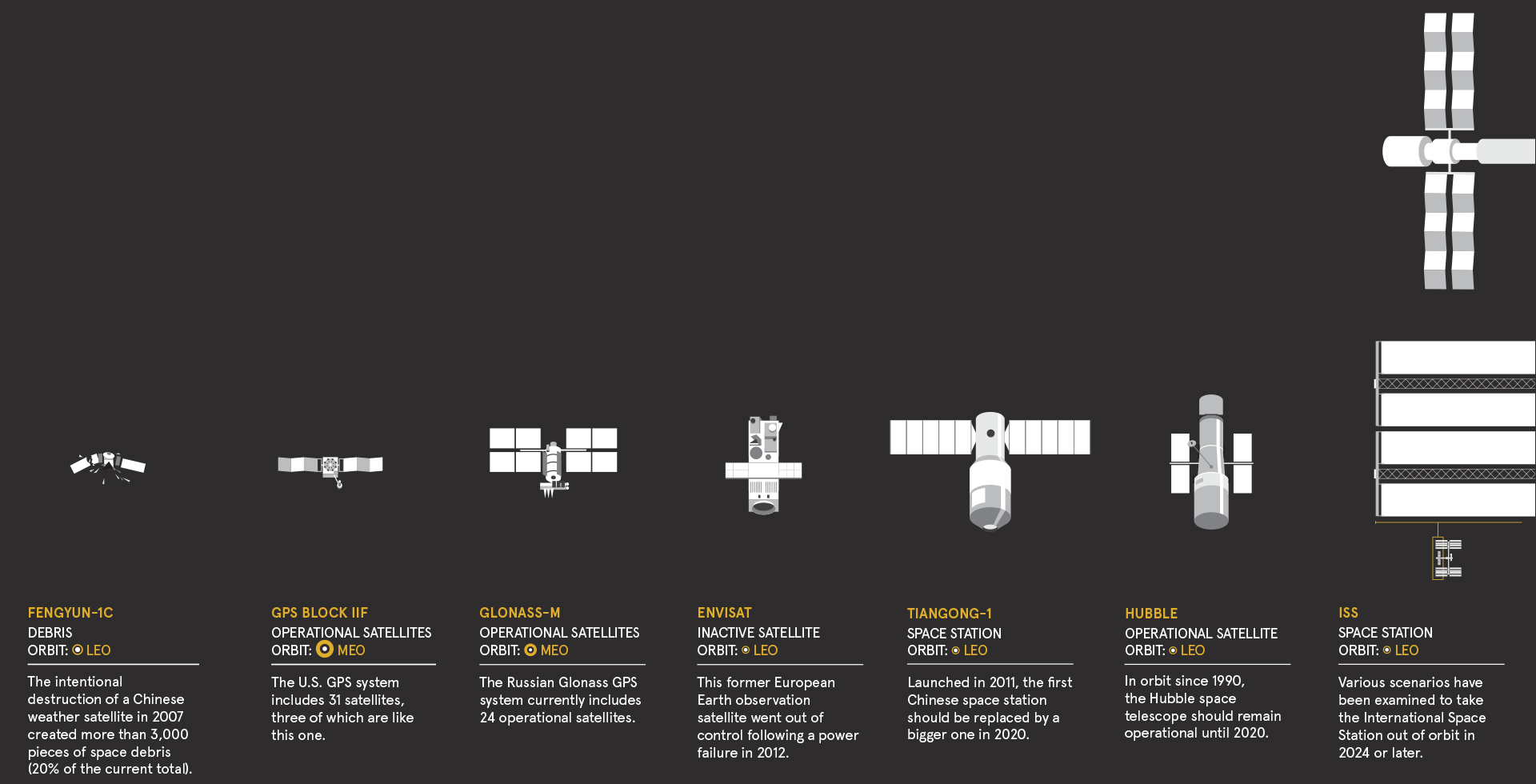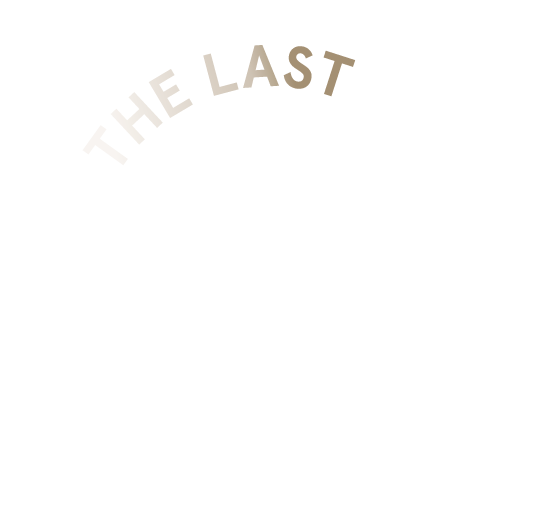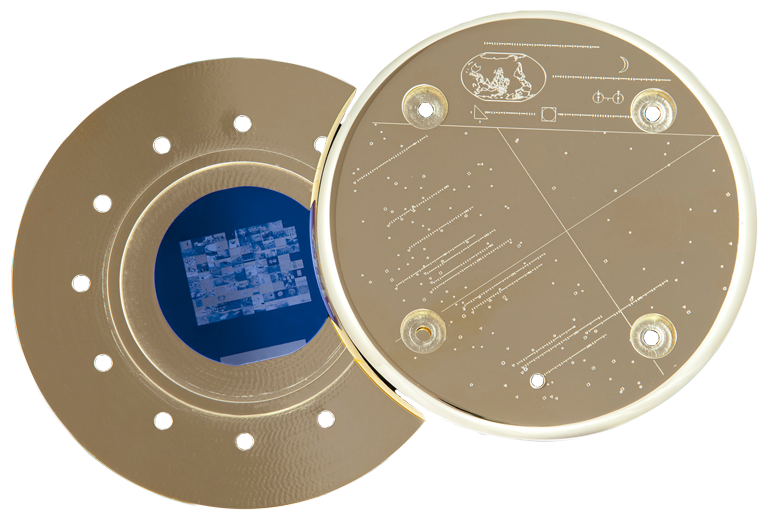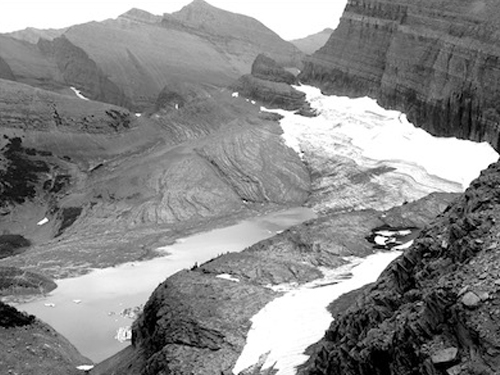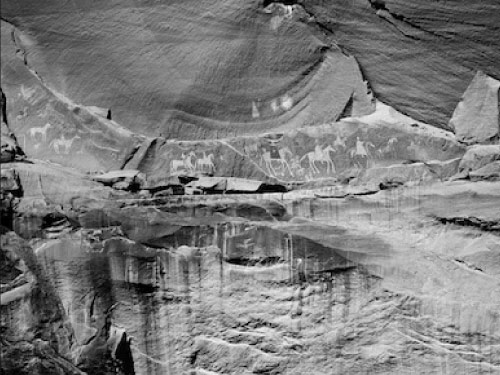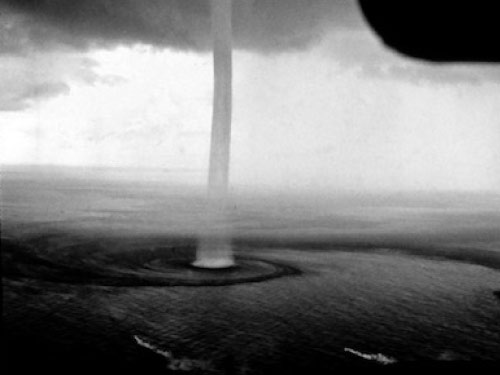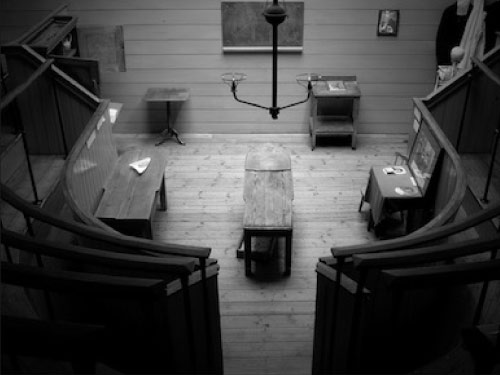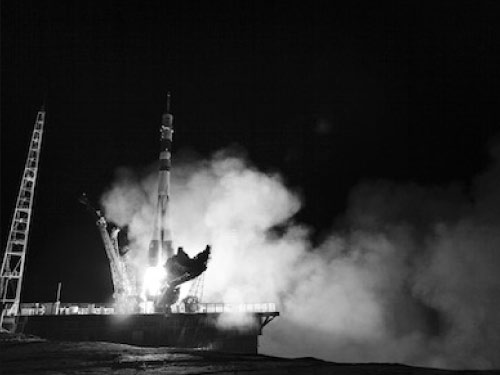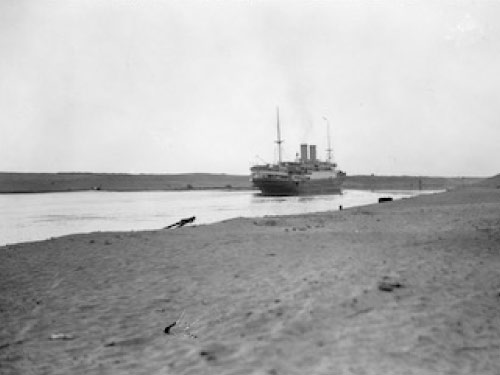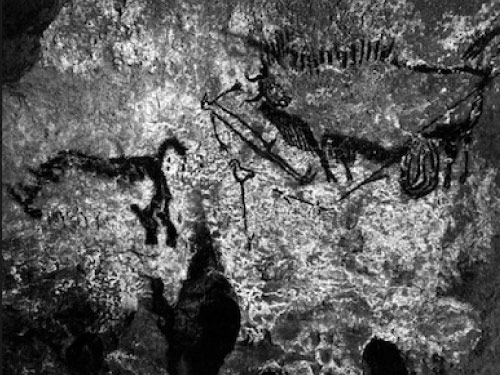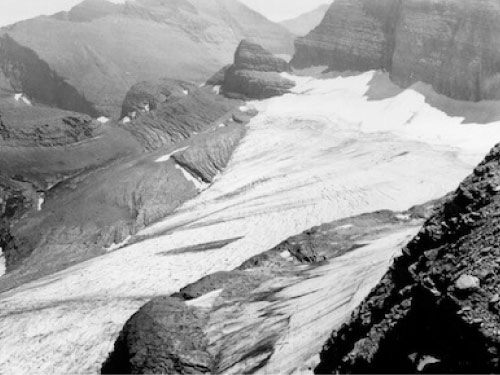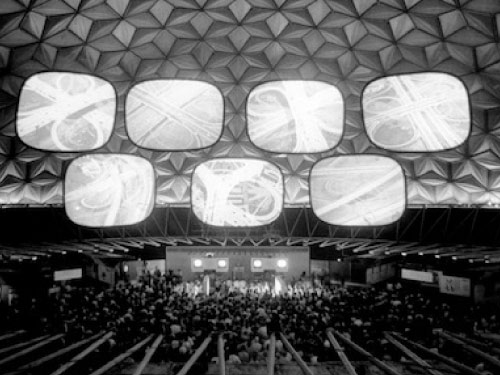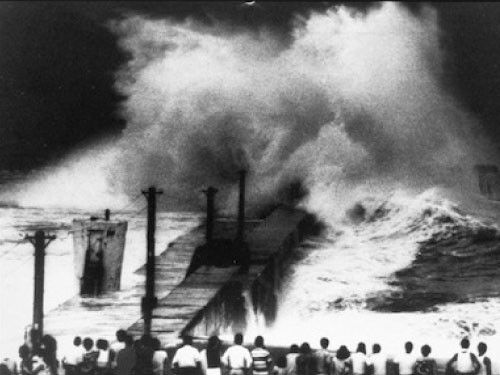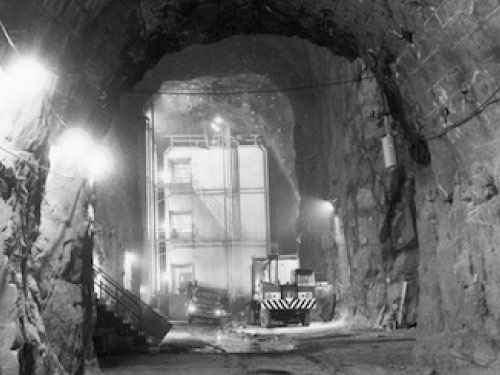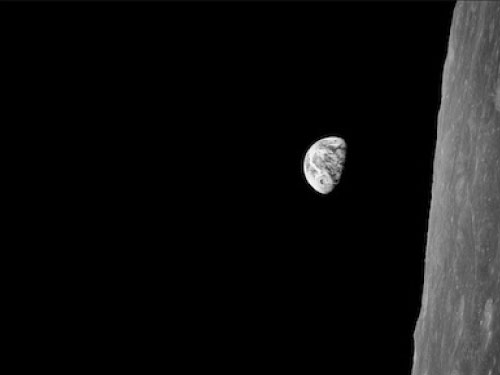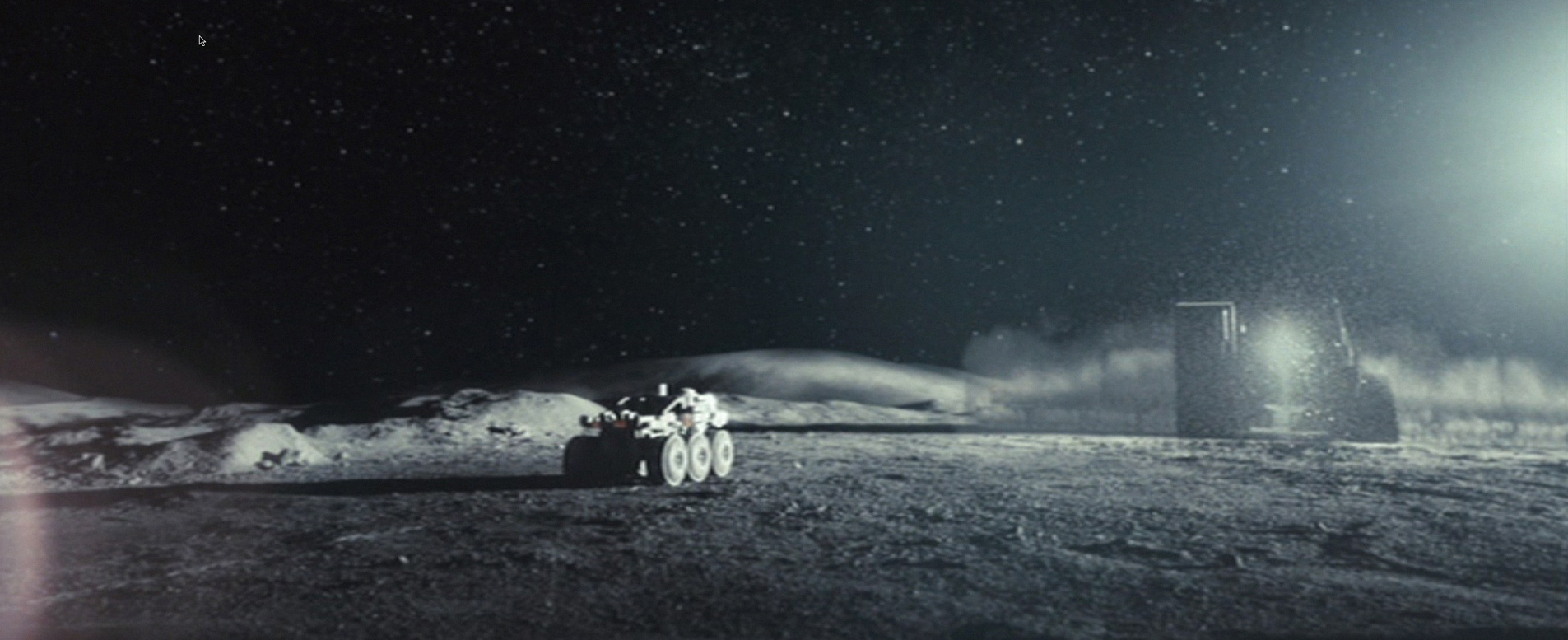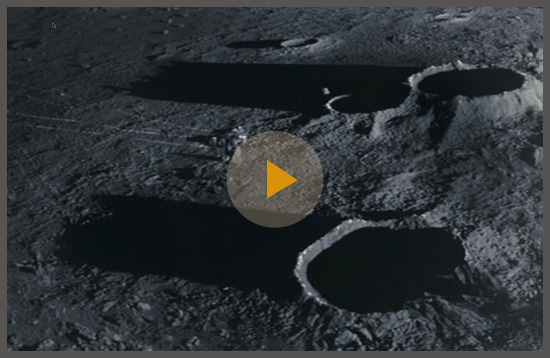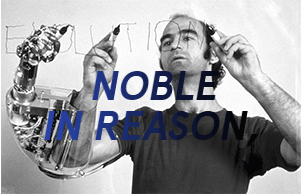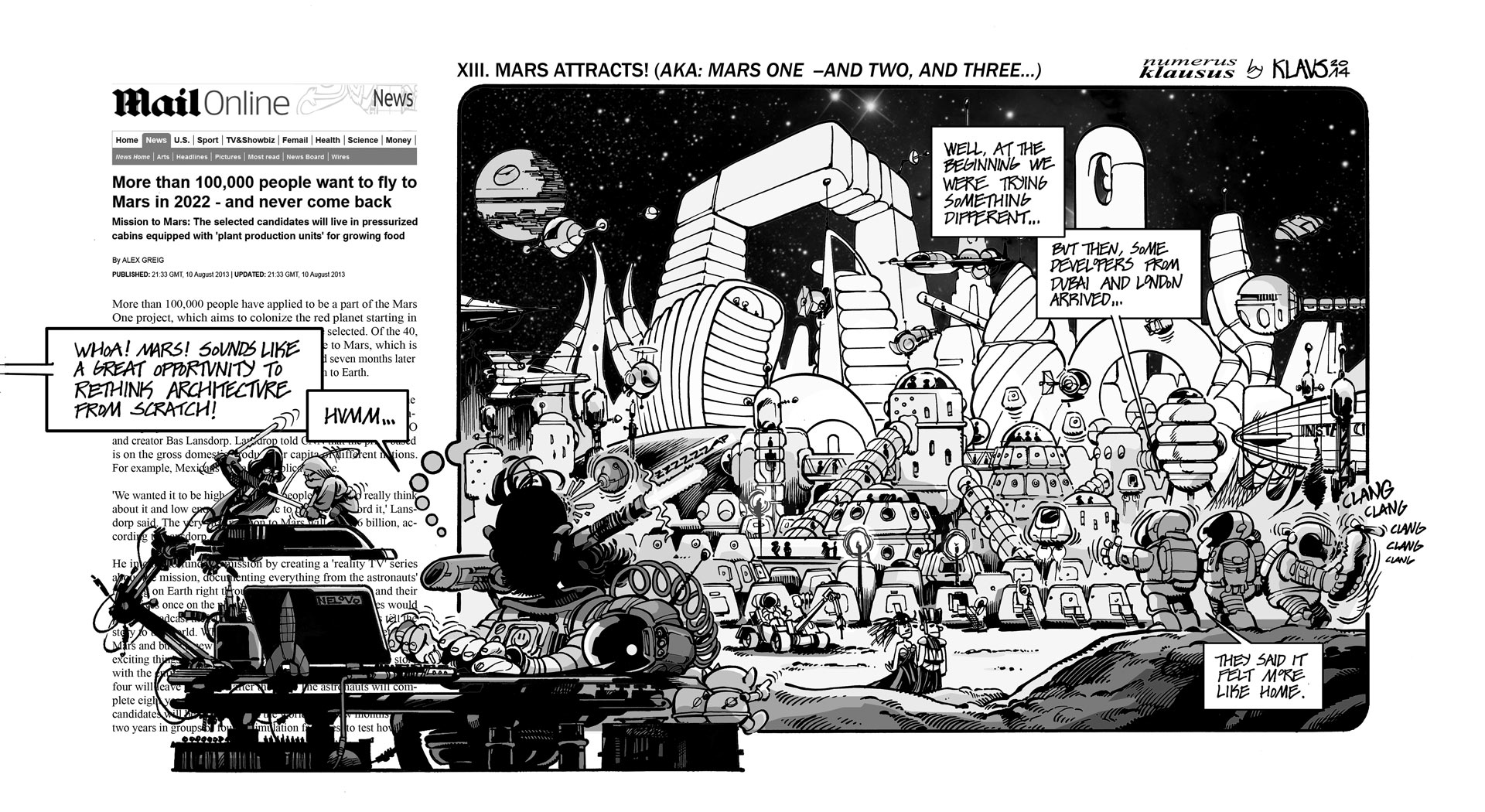-
Magazine No. 19
Space
-
No. 19 - Space
-
page 02
Cover
Space
-
page 03
Editorial
Space
-
page 04
uncube goes galactic
-
page 05 - 12
New World, Old Metaphors
Interview with Ricardo Scofidio
-
page 14 - 16
Galina Balashova
Space architect extraordinaire
-
page 17 - 25
Per Artem Ad Astra
Interview with Michael Najjar
-
page 26 - 27
Life on Mars
ZA Architects’ plan for living on the Red Planet
-
page 28 - 29
The Moon Goose Colony
Agnes Meyer-Brandis trains a flock of astronauts
-
page 30 - 39
Memories of the Moon Age
A Lunar love affair
-
page 40 - 47
Modular Living
At home on the ISS
-
page 48 - 52
Space Junk
Infographic by onlab
-
page 53 - 56
The Last Pictures
Trevor Paglen's portrait of humanity
-
page 57 - 58
Gold Rush
The battle for universal mining rights
-
page 59 - 63
Roadmap to the Stars
On extraterrestrial colonisation and being human
-
page 64 - 66
High Frontier
Gerard K. O’Neill's 1977 masterplan
-
page 67
Stairways to Heaven
The star-tracking observatory in Jaipur
-
page 68 - 69
Space Elevator
Getting high on the cheap...
-
page 70
Martian Terroir
How would space wine taste?
-
page 71
Klaustoon
XIII. Mars attracts!
-
page 72
Next
Urban Commons
-
-
uncube’s editors are Sophie Lovell (Art Director, Editor-in-Chief), Florian Heilmeyer, Rob Wilson and Elvia Wilk; editorial assistance: Susie S. Lee; graphic design: Lena Giovanazzi; graphics assistance: Madalena Guerra.
uncube is based in Berlin and is published by BauNetz, Germany’s most-read online magazine covering architecture in a thoughtful way since 1996.
When architects talk about “space” it’s usually in reference to floor plans and finite square metres of the Earth’s surface, to be shaped and sculpted, bought and sold. For this issue uncube is blasting off from our planet and out through the stratosphere, entering the infinitely expanding space of the universe, where the dimension of time becomes increasingly important as a parameter.
But with space travel comes baggage, both physical and in the form of humans’ earthly concerns: Who owns space? Who will mine resources and start colonies? On which planets? And what type of structures can be built? Indeed what could architecture be without gravity but just with infinite... space?
Join us as uncube goes galactic.Cover image: “spaceport” from the series “outer space”, 132 x 202 cm. (Photo courtesy the artist, © Michael Najjar)
Spaceport America, New Mexico, is the “world's first commercial spaceport” although it has yet to come into active operation as such. Designed by Foster + Partners, 2006-14, the building’s tenants include Virgin Galactic, SpaceX, UP Aerospace and Armadillo Aerospace. -
![]()
![]()
![]()
![]()
![]()
NASA space suit prototypes. (Photo: NASA)
-
new
Worlds
old
Meta
phorsInterview with Ricardo Scofidio
by Sophie Lovell
Half flying saucer, half rocket ship, the optical “white out” of the Blur Building was designed by Diller Scofidio + Renfro for the Swiss National Expo in 2002 at Yverdon-les-Bains. (Photo © Beat Widmer)
-
Architect Ricardo Scofidio is co-founder of Diller Scofidio + Renfro, an interdisciplinary design studio based in New York that is as well-known for its installation and performance projects as its architecture. He talked to uncube about skeuomorphism and the dangers of investigating the new when burdened by baggage from the old.
![]()
I understand that you have an interest in science fiction and space. Is there a particular author whose visions have left a strong impression on you?
Yes, I’ve read many books over the years. Science fiction has changed so much from the times of Jules Verne and H.G. Wells through cyberpunk to the incredible amount of dystopian fiction today. I’m less interested in a particular person’s idea of what the future of technology might be and more in stories that deal with bodies and people or ideas and problems – I guess “soft” rather than “hard” science fiction.
With the recent Mars missions, Chinese probes on the Moon, and the move towards commercial space flight for private citizens, we appear to be entering a new space race era. But there seems to be little architecture involved in these plans. Have you ever been asked to think up scenarios for space habitation?
I haven’t been approached to make a proposal, but I do think it’s an incredibly interesting problem, for many reasons. On Earth, if you make an architectural or constructional mistake, you may get water leaking through the roof; if you make a mistake in space it may mean the end of someone’s life.
-
»We really have to dump some things and find new answers to old problems, rather than propping up old solutions.«
The “Master/Slave” installation by Diller Scofidio + Renfro at the Fondation Cartier Paris in 1999. (Photo © Valerie Belin, © Collection Rolf Fehlbaum, Basel)
-
There’s such an enormous number of technological issues that have to be met that it would require an architect to spend years acquiring that knowledge or else to work with the relevant engineers. The other problem is that when design needs purely to solve pragmatic problems, a creative approach often becomes less important.
But probably the thing that scares me the most is that wonderful word “skeuomorph”. If I look at my browser and click on a skeuomorphic “home” symbol it takes me to my personal folders. We’re burdened by so many old ideas that attempt to help us deal with new, unfamiliar technologies, like using old metaphors or analogies to create a new language. For example, if you were designing a gravity-free architecture, I’m sure somebody would still insist that you put a standard doorway in the wall just so people know it’s the place to enter.Like the designer Raymond Loewy, who was the first to suggest putting a window in the American manned spacecraft so the astronauts could actually look out.
What is a window on a spacecraft compared to a window on Earth? Windows are often an opening to day-dreams, allowing the mind to think, fantasise, and wander. At the turn of the millennium we did an installation project called Master/Slave for the Cartier Foundation in Paris about the shift from the twentieth to twenty-first centuries. Our project involved a collection of tin toy robots that were owned by Rolf Fehlbaum from Vitra. The Cartier exhibition included a spectacular film by Andrei Ujica called Out of the Present, about the astronaut Sergei Krikalyov [he spent 10 months aboard MIR during the collapse of the Soviet Union, ed.]. Ujica gave Krikalyov a camera, which he smuggled on board the Russian space station. Sergei was at the opening of the Cartier exhibition and Liz Diller and I were lucky enough to sit opposite him at dinner where we talked about living in space. He found that being in space for an extended period of time produced a continuous enjoyable euphoria. One orbit took an hour and a half, during which time he saw night and day, and all four seasons. The most incredible thing for him was spending hours looking out of the window at Earth. So to design for space I think you would have to spend some time in orbit just to understand the issues involved.
-
Director Stanley Kubrick and cinematographer Geoffrey Unsworth developed a system for calculating the right lighting from the grey tones of Polaroids when filming “2001: A Space Odyssey”. An original work from the Stanley Kubrick Estate. This photo will be on view as part of the travelling “Stanley Kubrick” exhibition at the Krakow National Museum May 4 – September 14, 2014. (Photo © Warner Bros. Entertainment Inc. Source: University of the Arts London / Deutsches Filminstitut Frankfurt)
-
We have had ideas of outer space influencing architecture for many decades: from Buckminster Fuller’s Spaceship Earth to silver flying-saucer shapes and streamlined rocket forms. Norman Foster’s new Spaceport America for Virgin Galactic is particularly interesting since it seems to blend the terrestrial with an alien aesthetic. Humans seem to have a propensity for turning science fictions into science facts. Is this also the case for architecture? Are we building our futures according to how we envisage them to be?
In the 1920s, Norman Bel Geddes and other engineers started looking at automobiles in terms of aerodynamics and streamlining. Suddenly there was a whole field of aerodynamic design being applied to things like irons and toasters and coffee pots – even if they didn’t move one inch.
So what is the vision for an object in space? The closing sequence of Stanley Kubrick’s 2001: A Space Odyssey, where the protagonist Dave Bowman [Keir Dullea] ends up in a Louis XVI bedroom, was alien, inexplicable and disturbing for me to watch – much more so than if it had been something that we perceive as a “space environment” as represented by Hollywood today. You mentioned that the future becomes what we project upon it – as far as I’m concerned there are very few examples in which someone predicted the future and that’s exactly how it happened. Foster’s Spaceport seems to me more symbolic of the way we think space or the future will be, rather than really what the future might be.
![]()
Excerpt from “Out of the Present”, directed by Andrei Ujica. It features the astronaut Sergei Krikalyov, who smuggled a camera on board the Russian space station. (Video courtesy Facets Multi-Media)
-
The first photograph of the Earth taken from behind the Moon in 1968, “Earthrise”, inspired the idea of “Spaceship Earth” and suddenly changed our whole perspective of ourselves. Do you think it continues to have an effect on design?
Scientists have invented and sold us so many things that the industry can’t now turn around and say: “Oh we made a mistake, this thing is terrible for the environment and now you can’t have it.” Rather than developing new paradigms, energy is now being spent to allow us to keep what we’ve been convinced we want and desire, but with modifications to make this less aggressive towards the environment. We really have to dump some things and find new answers to old problems, rather than propping up old solutions.
How would you envisage the beginnings of a Martian or a Lunar colony?
Thinking about skeuomorphism, I am concerned that a Lunar colony might end up looking like a suburban town under a big protective dome.
-
Ricardo Scofidio is a founding principal of Diller Scofidio + Renfro, an interdisciplinary design studio that integrates architecture, the visual and the performing arts. He attended The Cooper Union School of Architecture and received a Bachelor of Architecture from Columbia University. He is Professor Emeritus of Architecture at Cooper Union.
DS+R’s architectural body of work includes: the Lincoln Center for the Performing Arts’ expansion and redesign; the Institute of Contemporary Art in Boston; the High Line in New York; and Blur in Switzerland. Projects in construction or in design include: the Museum of Image and Sound in Rio de Janeiro; the Columbia University Medical Center and Columbia Business School; the Broad Museum in Los Angeles; “The Corset” Residential Tower and Culture Shed, both in the Hudson Yards Development in New York; and Zaryadye Park, a new 35-acre public space next to the Kremlin in Moscow, Russia.
I wonder what Frank Lloyd Wright or Mies would do if designing a space colony? Would we even be designing for our bodies as they are now? How much baggage are we dragging from one discipline into an area that really wants to be perceived in a totally different way? I reread Anthony Burgess’ A Clockwork Orange a while ago. What’s so beautiful is that when you first start reading there are new words in the opening chapter that you don’t comprehend. But as you continue reading you pick up the language and start to understand this future time/place. So, how can we take a new problem and give it meaning that transforms the way we think about the object we are trying to make?
Do you think all the film material documenting the lives and work of astronauts on the ISS has any kind of effect on architects and how they think about environments?
I’m still struggling with the idea of what space is. At the moment I can’t think of space in terms of feet and inches. At one time the Earth was flat with heaven above and hell below, and if you went too far you fell off the edge. Then with the industrial revolution, space became about the transportation of goods from one place to another. Someone in a prison cell had no space, and someone in a mansion had lots of space. My personal understanding of space is no longer feet, inches, or metres, but time. I don’t say a place is 500 metres away, it’s five minutes away by foot – or if it’s in Los Angeles, it’s five hours away by plane. If we talk about going to Mars we don’t talk about distances, we talk about how many days we will spend travelling to it.
I was talking to a mapmaker once and got him a bit upset by saying: maybe the Moon is just half a mile from Earth, but it’s very small. And when we leave Earth and travel towards it, we shrink, getting smaller and smaller, which is why it takes so long to get there. How do we know that is not the case? I wonder how much we really know about what’s out there in terms of distances and dimensions. We have an Einsteinian understanding of space and know that dimensions change and space warps, but there are so many new discoveries and questions. I think in the future scientists will look back at how little we knew. IPrevious page: Richard Buckminster Fuller, “Geodesic Structures-Mono Hex”, from the series “Inventions: Twelve Around One”, 1981. © Buckminster Fuller Estate, courtesy the Deutsche Bank Collection.
-
Galina Balashova
Space architect extraordinaire
by Philipp Meuser
Side elevation of the Mir space station. Galina Balashova, watercolour on paper, 1984. (All images © Galina Balashova Archive)
-
Galina Balashova is the only woman in history to have been the main designer of three generations of spaceships. The 83 year-old’s desk in her apartment in Korolyov north-east of Moscow is littered with construction plans: Soyuz rockets, the space station Mir and the Buran shuttle – all proud testimonials to the technical space race between the USA and the USSR. Balashova’s responsibilities ranged from the ergonomic design of living and sleeping areas via comfortable cosmonaut seating to the design of space-proof toilet facilities. In later years she went on to design various branding elements such as medals and mission insignia.
![]()
Balashova’s cross-section of the command module of the Soyuz carrier rocket with its typical reclining seat forms still used today. Watercolour on paper, 1964.
-
Philipp Meuser is an architect, author, journalist, publisher, curator, and photographer. Born in 1969, he studied architecture in Berlin and went on to work as a journalist for German architecture magazine Bauwelt and the radio station Westdeutscher Rundfunk. Together with his wife Natascha Meuser, he founded an architecture practice in 1996 and a publishing house, DOM publishers, in 2005. Since 2001 he has curated a number of architecture exhibitions, mainly in collaboration with the Goethe Institute and focusing predominantly on the former Soviet Union. He is currently working on a book about Galina Balashova to be published later this year.
Galina Balashova: Architect of the Soviet Space Program
Ed. Philipp Meuser
Published: Autumn 2014
Because her work as an employee of the space concern Energija was covered by strict secrecy regulations, her sensational designs for the “Soviet heroes” in Space remained anonymous. It was not until the break-up of the Soviet Union that her architect colleagues learned of her role in what must be one of the unusual architectural challenges: Balashova designed dwellings that were beyond the laws of gravity. For this talented artist, the goal that the Russian Constructivists agonised over – an architecture floating free above the ground – was everyday routine.
![]()
Technical drawing of the Buran shuttle, 1988. Balashova was responsible for the typographic design and other elements of the Soviet equivalent of the American space shuttle.
-
Per
Artem
ad AstraInterview with Michael Najjar
by Sophie Lovell
“golden eye II”, 2012, 132 x 202 cm, edition of 6. (Photo courtesy the artist, © Michael Najjar)
-
In 2011 the artist Michael Najjar began a work entitled “outer space”, photographing the last launch of the Atlantis space shuttle at Cape Canaveral. Three years later he has completed a large part of his astronaut training programme and is set to become the first artist in space. He talked to uncube about his desire to fight gravity and the practicalities of becoming an astronaut.
![]()
“final mission”, 2012, 202 x 132 cm, edition of 6. (Photo courtesy the artist, © Michael Najjar)
-
“golden eye I”, 2012, 132 x 202 cm, edition of 6. (Photo courtesy the artist, © Michael Najjar)
-
»Space travel is a highly competitive sector and, as far as I can see, everybody tries to keep their secrets«
When I started working on this series it soon became clear that I needed to fly into space myself in order to personally experience what it means to leave our home planet and to contemplate it from space. Also I was very keen on learning how to prepare both body and mind for an actual space flight.
Who did you have to persuade to get on the programme and how?
I approached Virgin Galactic, because they are the most advanced company in building new spaceships for commercial space travel and they showed great interest in what I’m doing. In October 2012 I met Richard Branson for the first time at Spaceport America in the desert in New Mexico. The organisation of the cosmonaut training at Star City in Russia was a quite complicated and time-consuming process.
The first and most obvious question is why? What started you on this outer space project?
Ever since I was a little boy I have been fascinated by space and travelling in spaceships to distant new worlds. Now space travel has come within reach for me and that’s quite exciting. New technologies are being developed, allowing us to explore space on a much broader level, which will transform the way we live and work in the future dramatically. As an artist I’m interested in how these transformations will shape our future social structures.
Was the idea right from the beginning to become an actual astronaut yourself?
In my artistic work I am always very much involved in physical challenges and experiences.
-
“gravitational rotator”, 2013, 132 x 202 cm, edition of 6. (Photo courtesy the artist, © Michael Najjar)
-
“kinetic drift”, 2014, 132 x 202 cm, edition of 6. (Photo courtesy the artist, © Michael Najjar)
-
![]()
Michael Najjar in training at the Yuri Gargarin Cosmonaut Training Centre, Star City, Russia. (Photo: Thomas Rusch)
»The space suit is in fact an abstract piece of architecture«
![]()
Photo: Thomas Rusch.
Video by Michael Najjar: “spacewalk” HD, 1-channel, stereo, 3.31 min, ed. 6, 2013 © Michael Najjar, 2013, in collaboration with Thomas Rusch and Dieter Jaufmann.
-
The specialised German agency “Space Affairs” and its space-addicted owner Andreas Bergweiler helped me to organise it and make this mission possible. Training in a Soyuz capsule, spacewalk training in a hydrolab, zero-G floating during a parabolic flight and a ride into the stratosphere in a Russian MIG-29 fighter – what an incredible experience! For most of the training sessions I was accompanied by the German photographer Thomas Rusch.
You are actually going to space next year, aren’t you? When and where?
Yes I am. The date is not confirmed yet, but it should be in 2015. I will board Virgin Galactic’s Spaceship Two and launch from Spaceport America.
![]()
Michael Najjar in training at the Yuri Gargarin Cosmonaut Training Centre, Star City, Russia. (Photo: Thomas Rusch)
-
Michael Najjar is a German artist, adventurer and future astronaut. Born in 1966, he has lived and worked in Berlin since 1988. His work is shown in museums, galleries and biennials around the world. The focus of his photography and video work is on key elements of our modern society driven and controlled by computer and information technologies. Najjar transmutes science, history and philosophy into visions and utopias of future social structures emerging under the impact of cutting-edge technologies. The fusion of realistic elements with fictitious realities is a recurrent hallmark in his work which is usually composed in thematically focused series.
How many different countries have you trained in, and how much more training is there to go?
I did most of my training in Russia and some at the DLR [German Aerospace Centre] in Cologne. In June this year I will perform a halo jump in the USA, which means parachuting from 10,000 metres up. Before the actual flight I will complete my training at Spaceport America itself.
One of the most interesting and special aspects of space travel in our era is its apparent intense international collaborative nature between so many different agencies and companies. Is that your experience?
I think international collaborations are based more on economic aspects rather than on cultural or technological exchange. Space travel is a highly competitive sector and, as far as I can see, everybody tries to keep their secrets.
The spacesuit an astronaut wears is a highly complex piece of equipment – almost a built environment in its own right. What’s it like to wear one? What effect does it have on your ability to perceive and experience your environment?
The spacesuit is like a spaceship in itself. It weighs 150 kilogrammes and is in fact an abstract piece of architecture. When I did my first briefing with the suit I was a bit anxious about getting claustrophobic inside it to be honest. On my actual first spacewalk training day I was put into the suit, lifted by crane over the water surface of the hydrolab and then safety divers led me down to 12 metres depth. Once all the life support systems activated, I felt great and much more comfortable than I’d imagined. An important experience was finding you are locked into a closed system, which deprives you from any real relationship to the environment. You do not feel the weight of the suit or your body. All of your senses – except vision – are cut off from the world around you.
You are about to become an astronaut! Does that bring with it feelings of responsibility?
Well the most important feeling of responsibility I have is towards my family: my wife and two-and-a-half year old son. Therefore I’m trying to prepare for the space flight as best as I can to reduce risks to a minimum. I
-
Life•on•Mars
ZA Architects’ plan for living on the Red Planet
![]()
The underground colony would be lit by light wells cut through the Martian crust, and protected by banks of basalt from the biting surface winds and dust. (All images courtesy ZA Architects)“A new life awaits you in the off-world colonies! A chance to begin again in a golden land of opportunity and adventure”. This advertisement, memorably broadcast in the movie Bladerunner, finds echoes in the recent fever over the “red” land of opportunity. Mars missions, colonies and mining are all suddenly coming into focus as close-to-realistic propositions, getting everybody very hot under the collar.
Of course the reality on the surface itself wouldn’t be so toasty – the scorching red desert of myth is in fact a freezing, windy one. One of the most convincing current proposals for building and maintaining a Martian colony comes from ZA Architects, who’ve taken into account key facts learnt from the analysis of rock and earth samples collected by NASA’s Phoenix Lander explorations. Namely: much of Mars is made of basalt, with copious embedded water, ice, and even glaciers under the surface. -
ZA Architects, founded in 2009 by Dmitriy Zhuykov and Arina Ageeva, is an architecture and urbanism studio based in Dessau, Germany, which specialises in proposing new approaches to projects without predetermined aesthetics. The practice, by following a comprehensive philosophic approach which incorporates an emotional component, aims to create design solutions which synthesise brief, context, and functional requirements.
![]()
![]()
The lofty excavated caverns of the colony would be supported by hexagonal basalt columns and strung with basalt roving, to divide and structure the space.
The idea is to send an initial mission out with digging robots to excavate basalt caves, with hexagonal stone columns to support them. A mission with astronauts would follow, assembling start-up facilities to source water and process oxygen from the underground glaciers. They would also set up a basalt processing plant, where robots would transform crushed rock into basalt wool for insulation, and roving: fibrous cable stronger than steel that can be used to weave living pods and other facilities.
With samples of Martian soil having indicated the potential for growing crops such as asparagus, the basics of water, food and shelter could therefore all be locally sourced. Of course a troglodytic existence, eating asparagus, surrounded by spider-like robots might not be to everybody’s taste, but this clever solution of mine-as-colony, tucked below the inhospitable surface, makes a lot of sense. I (rgw)
-
The
M
Goose
Colony
NAgnes Meyer-Brandis trains a flock of astronauts
![]()
Photo: MOBILE MOON, Astronaut Training Method No. V, video still “Moon Goose Colony”, 2011 © Agnes Meyer-Brandis, VG Bild-Kunst. (Image courtesy the artist) Video: “Moon Goose Colony”, 2011 © Agnes Meyer-Brandis.
-
Agnes Meyer-Brandis lives and works in Berlin. She comes from a background of both sculpture and new media art. Her award-winning work is at the experimental edge of art and science, exploring the zone between fact and fiction. Meyer-Brandis is the founder of the “Forschungsfloss FFUR / Research Raft for Subterranean Reefology”, a small institute whose chief aim is to explore and confirm subterranean phenomena and unknown lifeforms. She realized an artistic experiment in weightlessness in cooperation with the German Space Agency DLR.
“THE MOON GOOSE ANALOGUE: Lunar Migration Bird Facility” by Agnes Meyer-Brandis was commissioned by The Arts Catalyst and FACT, in partnership with Pollinaria and in coproduction with Z33. “The Moon Goose Colony, P1” is a Pollinaria project by Agnes Meyer-Brandis. “The Moon Goose Experiment” is part of the Curated Expediton No.1 by Capsula.
Since the total solar eclipse of August 2008, the German artist Agnes Meyer-Brandis has been working on a project to train a flock of geese to fly to the moon. The project’s impetus came from the English bishop Francis Godwin’s 1638 book The Man in the Moone in which (you guessed it) moon geese tow a chariot into the sky. The first steps of Meyer-Brandis’ ongoing experiment were naturally to name each of 11 goose eggs after a famous astronaut or space character, and then to imprint the goslings onto herself as soon as they hatched. Since their fledgling years the birds have learned to fly in formation – but more impressively they have learned to handle space conditions like weightlessness and lack of oxygen in a special facility: a moon “analogue” or practice arena. Since 2011 they have been rehearsing their eventual space-flight in their home on a farm in Pollinaria, Italy. I (ew)
Photo: Moon Goose Experiment, 2008 © Agnes Meyer-Brandis, VG Bild-Kunst. (Image courtesy the artist)
-
Memories
of the
Moon
AgeA Lunar love affair
by Lukas Feireiss
The 1952 Macy’s Thanksgiving Day Parade in New York, featured the Spaceman, a tribute to growing Lunar lunacy in the USA. (Photo © Bettmann/CORBIS)
-
For centuries humans have been fascinated by space travel and visiting other planets. Our nearest astronomical neighbour, the Moon – just three days away by rocket – still serves as an object of creative projection and speculation to visionaries across the globe. It has been nearly four decades since the first moonwalk, making today a good moment to trace a selective history of Lunar exploration. Lukas Feireiss explores space travel to the Moon as the ultimate flight of fancy for the human imagination and testing ground for ideas in reality.
Born to a mercenary and a herbalist who was later tried for witchcraft, the German mathematician, astronomer and astrologer Johannes Kepler produced the first literary science fiction about our planet’s only natural satellite, the Moon. Published four years after Kepler’s death in 1634, his fantasy novel Somnium (Latin for “The Dream”) presents a detailed imaginative description of how the Earth might look when viewed from the Moon, and is considered the first serious scientific treatise on Lunar astronomy.
The pseudonymous, posthumously published novel The Man in the Moone (1638) by English bishop Francis Godwin is also considered one of the first works of science fiction. This fantastic voyage of utopian discovery tells the story of a man who flies to the Moon in a chariot towed by geese, encountering an advanced Lunar civilisation. Both books, written by key figures of the seventeenth-century scientific revolution, had an enormous impact on the European imagination for centuries after their initial publication.
![]()
-
![]()
Frontispiece and title page of the first edition of “The Man in the Moone or the Discourse of a Voyage” by Domingo Gonsales, 1638.
Yet the true pioneer of the space age undoubtedly remains French novelist, poet and playwright Jules Verne with his seminal novel on space travel From the Earth to the Moon (1865) and its sequel Around the Moon (1870). The two books tell the story of an attempt to build an enormous sky-facing space gun and to launch three people in a projectile towards the Moon. Verne’s rich imagination paired with scientific accuracy has fuelled the realms of both science and the arts ever since.
French illusionist, innovator and pioneer filmmaker George Méliès’ 11-minute silent film The Trip to the Moon is loosely based on Jules Verne’s space travel novels and also H.G. Wells’ The First Men in the Moon (1901). Méliès was the first to translate the dream of manned space travel into moving images, and showed the possibility of what the Earth might look like from the Moon.
Meanwhile, French astronomers Maurice Loewy and Pierre-Henri Puiseux spent the years between 1894 and 1909 making a complete series of detailed photographs of the Moon and the Lunar surface. Their L’Atlas Photographique de la Lune, published in 1910, is considered the finest and most meticulous documentation of the Moon until the advent of space probes in the 1960s. The Moon’s craters Loewy and Puiseux are named after them.
In 1919, the theoretical basis for future NASA Moon landings was set by a visionary 22-year-old Ukrainian engineer and mathematician called Yuri Vasilievich Kondratyuk.
-
![]()
![]()
![]()
![]()
![]()
Early space travel research and development was funded by the military: infamously with the development of the V2 rocket by Wernher von Braun and his team during WWII , most of whom were coopted by NASA – seen here, with von Braun centre right, in Huntsville, Alabama in 1956. (Photo: NASA); whilst during the Cold War in 1961, Russian cosmonaut Yuri Gargarin became the first man in space (Photo: ESA). Despite its beginnings, the space race incited the public imagination: here, a Vintage Moon Rocket from Modern Toys, 1950s (Photo: Etsy); the Space Happy Coloring Book, 1953 (Merrill Co.); The Complete Book Of Space Travel by Albro Gaul, 1956 (World Pub. Co).
-
In For Those Who Shall Build, the young theoretician developed the first known Lunar Orbit Rendezvous (LOR), a key concept for a landing and return space flight from Earth to the Moon. When American astronaut Neil Armstrong visited the Soviet Union after his historic flight to the Moon, he collected a handful of soil from outside Kondratyuk’s house in Novosibirsk to acknowledge his contribution to space flight. A crater on the Moon is named after him as well.
Germany 1942, in the midst of World War II, marked the development of a rocket that breached the boundaries of space for the first time in history. The dubious mastermind and “rocket scientist” behind the infamous V2 rocket, Wernher von Braun, went on to work for NASA after the war and literally jump-started the American space programme.
By the early 1950s space travel was part of everyday popular culture. The golden age of space travel arrived before space travel actually became a reality. In the two decades following World War II, fuelled largely by post-war optimism combined with faith in technology and engineering, the possibility of space flight took a firm hold of the public imagination. References to rockets and space travel were everywhere, from television and movies to literature and comic books, toys and games, bubble gum and breakfast cereal.
With the launch of the first satellite Sputnik 1 into Earth’s orbit by the Soviet Union, the twentieth-century space race was officially initiated in 1957. From then on the Cold War rivals, the Soviet Union and the United States, battled for supremacy in space flight capability, ushering in a plethora of new political, military, technological and scientific developments. Less than a month after Sputnik 1, the USSR gave the world its first cosmonaut heroine: Laika, a dog who became the first animal to orbit Earth on board Sputnik 2, only to die after three days due to extreme heat. Laika was not the first, though; before humans went into space, several animals made the trip, including numerous non-human primates in the late 1940s.![]()
Albert I
† 1948
![]()
Albert II
† 1949
![]()
Dezik
† 1951
![]()
Laika
† 1957
![]()
Gordo
† 1958
![]()
Able
† 1959
-
In 1958, the USA countered with the establishment of the National Aeronautics and Space Administration (NASA) under President Eisenhower – and in the 1960s the space race reached a whole new level. On 12th April 1961 the Soviet pilot and cosmonaut Yuri Gagarin became the first human to orbit the Earth. A month later he was followed by Alan Shepard, who became the first American astronaut in space. Soon after, the goal of manned space flight to the Moon was set by John F. Kennedy in his legendary “We choose to go to the Moon” speech at Rice University on 12th September 1962. Over the following decade, humanity displayed its ingenuity and ability to overcome the seemingly impossible and showed itself powerful enough to conquer even the force of gravity.
The invention of the spacesuit, in particular, offered a supreme example of the newly discovered possibilities in the provision of basic, stand-alone shelter and protection beyond Euclidean space. It was no coincidence that individual and apparently floating pneumatic spaces arose as the signature forms of a novel, autonomous architecture around the same time.
![]()
![]()
Haus-Rucker-Co, “Mind Expander” series, 1967-69. (Photos courtesy Haus-Rucker-Co)
![]()
Walter Pichler, “Small Room, Prototype no. 4”, 1967. (Photo: Werner Kaligofsky © Generali Foundation, courtesy Galerie Elisabeth & Klaus Thoman Innsbruck/Wien)
-
![]()
Stewart Brand’s 1968 “The Whole Earth Catalog” cover and button, and a 1968 NASA Apollo 8 image of the “Earthrise”.
In 1966, the American writer and counterculture activist Steward Brand initiated a public campaign to have NASA release a satellite image of the entire Earth as seen from space, this first photograph, called Earthrise, later adorned the first edition of his infamous Whole Earth Catalog in autumn 1968.
Brand regarded the image as a powerful symbol, evoking a sense of shared destiny and responsibility for all mankind. In the same holistic vein, Buckminster Fuller’s Operating Manual for Spaceship Earth, published the same year and available via Brand’s catalogue, compared the planet to a spaceship flying through space: a spaceship with a finite amount of resources that cannot be resupplied.
At the same time, American filmmaker Stanley Kubrick uncannily anticipated the iconographic power of manned space flight per se with his enigmatic science fiction masterpiece 2001: A Space Odyssey.
On July 20th 1969, the dream was finally accomplished. NASA astronauts Neil Armstrong, Buzz Aldrin, and Michael Collins were rocketed to the Moon. While Collins remained in Lunar orbit in the command spacecraft, Armstrong and Aldrin landed their Lunar Module on the Moon itself. Broadcast on live TV to a worldwide audience of an estimated one-fifth of the Earth’s population, Armstrong’s famous words: “That’s one small step for man, one giant leap for mankind” and his photo of Buzz Aldrin on the Moon’s surface quickly became icons of American space exploration.
Kubrick’s cinematic imagination even predates the famous live televised pictures of the Earth and the Moon from Apollo 8, which shook the foundations of human culture, experience and self-perception.
-
![]()
Tom Sachs, “Landing Excursion Module”, 2012. (Photo: Graham Judson, courtesy Tom Sachs Studio and Gagosian Gallery, LA)
![]()
Walter Cronkite’s famous brodacast of the Apollo 11 Moonwalk, 1969.
(Video: CBS News) -
Foster + Partners’ concept for a Lunar outpost near the Moon’s south pole, 2013. (Image courtesy Foster + Partners).
-
Lukas Feireiss (*1977) is a curator, artist and writer and a graduate of Comparative Religious Studies, Philosophy and Ethnology. His Berlin-based creative practice Studio Lukas Feireiss focuses on the discussion and mediation of architecture, art and contemporary culture in the urban realm. His studio provides overall conceptual development, design and implementation for diverse formats of knowledge dissemination and its visual communication to cultivate cultural reflexivity. He is the editor and curator of numerous books, exhibitions and symposiums and teaches at several universities worldwide.
www.studiolukasfeireiss.com
The Apollo 11 mission effectively ended the space race and fulfilled the goal proposed seven years earlier by President Kennedy to land a man on the Moon and return him safely to the Earth before the end of the decade. Five subsequent Apollo missions also landed astronauts on the Moon, the last in December 1972. In these six flights, 12 men walked on the Moon. The moment that manned space flight became a reality, real life in the late 1960s and early 1970s brought an end to the space frenzy back on Earth. Once the goal had been achieved, the enormous sums spent on the space programme suddenly seemed no longer justifiable against the backdrop of the Vietnam War, race riots, assassinations of civil rights leaders and general political turmoil.
However, the dream of manned space travel to the Moon as well as life on the Moon lingers on and continues to inspire both artists and architects. Perhaps most ingenious contemporary artistic interpretation is Tom Sachs’ Space Program (2007), a life-sized bricolage realisation of the key components of the Apollo programme with a huge, intricately built Lunar module as its centrepiece. The American artist recollects this historic event of collective memory as a custom-made experience from the free domain of public imagination.
The current re-emergence of the space theme across all mass media from newsreels to Hollywood blockbusters is subliminally fuelling the public imagination once more and seems to be preparing mankind for the dawn of a new space age. More then forty years after men first set foot on the Moon, interplanetary space travel has again entered the realm of the achievable. Whilst a Chinese “Jade Rabbit” crawls across the Moon’s surface, commercial space companies like Virgin Galactic, Blue Origin, Bigelow Inc. and SpaceX aspire to realise trips to the Moon by 2043, and the British architecture practice Foster + Partners, together with the European Space Agency, is currently investigating the possibilities of 3D printed Lunar habitations with Lunar soil as building material.
The future was never closer than it is today. Sooner or later, we are going back to the Moon.
![]()
-
Mo
d u
larLiv
ingAt home on the ISS
by Sophie Lovell
Expedition 16 Commander Peggy Whitson participates in a session of extravehicular activity (EVA) as construction continues on the ISS, 2007. (Photo: NASA)
-
Some 400 kilometres above our heads, hurtling along at 27,600 kilometres per hour, is possibly the most extraordinary – and certainly the most expensive – building ever created, located in the most hostile environment known. The International Space Station (ISS) has been in continuous occupation for the past 13 years. It provides a cramped yet highly-ordered home, workplace and life-support for between three and ten people at any one time, and is run collaboratively by sixteen nations and five different space agencies from Russia, the US, Japan, Canada and Europe: Roscosmos, NASA, JAXA, CSA and ESA respectively.
Since its inception with the first Russian module Zarya in 1998, the ISS has continually grown and now provides 837 cubic metres of living space for its crew, within sixteen modules. Inhabitants live there in weightless conditions for up to six months at a time, so considerable attention is paid to their health and well-being with a range of exercise facilities including a treadmill, bench press and exercise bike. There is even a “cupola” module functioning as a form of balcony or picture window for residents to enjoy views of earth below and space beyond in their spare time. Two further Russian research modules, the Nauka and the Uzlovy are due to dock onto the ISS in 2014, and in 2015 the private company Bigelow Aerospace will send up its BEAM module for testing – an inflatable structure which could prove ground-breaking as a lightweight prototype for space habitation.
Because the ISS orbits the earth once every 92 minutes, the “days” are very short, so the 10-hour workday is regulated according to a Mission Elapsed time schedule. The astronauts’ diets are devised according to preferences and needs, with food preserved in refrigerated, frozen and canned form. Water is recycled and the station is self-sufficient in this respect. Energy is primarily supplied through solar power collected by a complex 12,000 square-metre solar-array system of sails attached to the structure. -
In this recording, an astronaut on one of the first missions by space shuttle Discovery announces: “It’s nice to be in orbit”. The photo was taken by an STS-133 Discovery crew member after the station and shuttle began separation and Discovery made its final return to Earth in 2011. (Sound and photo: NASA)
-
Russian cosmonaut Anton Shkaplerov, Expedition 30 flight engineer, participates in an EVA session to continue outfitting the ISS in 2012. (Photo: NASA)
-
This recording is not from the ISS but from the 1962 Mercury 6 mission, which carried John Glenn and made him the first astronaut to orbit the earth. In this photo, astronaut Mike Fossum transfers payload during a spacewalk in 2011 for the Robotics Refuelling Mission. (Sound and photo: NASA)
-
NASA astronaut Ron Garan, Expedition 28 flight engineer, looking out of a window of the ISS Cupola, 2011. (Photo: NASA)
-
Interior view of the Destiny laboratory on the ISS during the Expedition 7 mission, 2003. (Photo: NASA)
-
Scheduled to remain in service until 2024, the original function of the ISS was to serve as a scientific research base, but today it provides an educational role as well, with regular interactive broadcasts between resident astronauts and students on earth. With increasing private and state interests in the future potential of mining passing asteroids, the Moon, and even Mars for valuable minerals, the ISS now looks to be taking on a growing commercial role: as a staging post for a nascent twenty-first century gold rush... I
![]()
Expedition 33 Commander Suni Williams gives a tour of sleeping and bathroom facilities on the ISS. (Video courtesy NASA)
-
![]()
![]()
![]()
First published in the Swiss science magazine Reflex, co-published by the Geneva-based press agency LargeNetwork and the Ecole Polytechnique Fédérale de Lausanne (EPFL).
-
![]()
-
![]()
-
![]()
-
The graphic design agency onlab was founded in 2001 by creative director Nicholas Bourquin. He was joined by artistic Director Thibaud Tissot in 2007. Although both partners are Swiss, onlab is based in Berlin, Germany where they work on commissioned, collaborative as well as self-initiated design projects. In recent years they have gained a considerable reputation for their infographic work.
Some of onlab’s most well-known projects include the visual identity of the city of Tramelan, the redesign of the Italian architecture magazine domus and the design and conception of the German contribution to the architecture Biennale in Venice 2008. Bourquin was also co-editor and designer of the graphic design bestsellers "Los, Dos and Tres Logos" and "Data Flow 1 + 2" (Gestalten). In 2003 he also co-founded the independent publishing house 'etc publications'.
Nicholas Bourquin and Thibaud Tissot have been visiting professors at the Bauhaus Weimar since 2010.
![]()
-
Trevor Paglen is an artist living in New York whose work deliberately blurs lines between science, contemporary art, journalism, and other disciplines to construct unfamiliar, yet meticulously researched ways to see and interpret the world around us. He studied at U.C. Berkeley and the Art Institute of Chicago, and his work has been exhibited at the Metropolitan Museum of Art, New York; Tate Modern, London; The Walker Arts Center, Minneapolis; The San Francisco Museum of Modern Art; the 2008 Taipei Biennial; the 2009 Istanbul Biennial; the 2012 Liverpool Biennial, and numerous other solo and group exhibitions.
![]()
![]()
![]()
Trevor Paglen’s
portrait of humanityIn 1977, NASA selected a committee to decide what aliens should learn first about humans if they discovered we exist. The group – not the first optimistic NASA initiative of this kind – was headed by Carl Sagan, and chose images and sounds they believed to most fully “explain” or embody the human race. These were then engraved on a gold-plated copper disk (complete with phonograph-style playback instructions for the finder), and the Golden Record was launched into space aboard the Voyager 1 space probe.
Unsurprisingly this partly hypothetical, experiment in representing humanity attracted plenty of criticism at the time. And in 2012, 35 years on, the possibilities of semiotic self-representation were certainly due for a rethink. So the artist Trevor Paglen engaged other artists, scientists, anthropologists and philosophers in selecting The Last Pictures, 100 images to be nano-etched onto a tiny silicon wafer, strapped onto the television satellite Echostar XVI and launched into orbit, on the slim chance that an interstellar being finds it some day. (ew)
All images courtesy Trevor Paglen
-
Paglen worked with artists, scientists, anthropologists and philosophers, selecting 100 images to launch into space strapped to a TV satellite.
![]()
![]()
![]()
![]()
![]()
![]()
-
![]()
![]()
![]()
![]()
![]()
![]()
-
![]()
![]()
![]()
![]()
![]()
![]()
-
Gold Rush
The battle for universal mining rights
by Claire L. Evans
![]()
Film still from Duncan Jones’ “Moon”, 2009. (Image courtesy Koch Media)
![]()
This trailer for the corporation Deep Space Industries proposes asteroid-mining as the solution for our future. It’s eerily reminiscent of a similar trailer for space mining in the movie “Moon”. (Video: Subtractive, Inc.)
-
Claire L. Evans is a writer and artist working in Los Angeles, California. Her “day job” is as the singer and co-author of the conceptual disco-pop band YACHT. A science journalist and science-fiction critic, she is a regular contributor to Aeon Magazine, Vice, Motherboard, and Grantland, and is the editor-at-large of OMNI Reboot. A collected book of her essays, High Frontiers, is now available from Publication Studio.
Earth is a closed system. Although the sun will continue to spill free energy for five billion years, our more finite resources – minerals like zinc, tin, copper, and lead – won’t last us through the century. So where are we to find these elements once we start scraping the bottom of our planetary barrel? To many speculators, the answer is obvious: space.
Of course, science fiction writers — those other speculators — have known this for decades. After all, exploration is always driven by economic necessity; the science fiction canon abounds with prospectors searching for profit at the edge of the known world. The crew of Ridley Scott’s Alien were miners; mining is the central pursuit in Outland, Total Recall, and Moon. Robert A. Heinlein and Frank Herbert alike placed the jockeying for resources at the centre of their interstellar dramas.
But as our need for resources grows pressing enough to justify the cost of retrieval, space mining is an increasingly plausible option. NASA is tinkering with it – an upcoming mission, OSIRIS-Rex, will extract a 60-gramme sample from a carbonaceous asteroid named Bennu – as is private industry; two new companies, Deep Space Industries and Planetary Resources, have already begun testing and long-term planning for mining missions as early as 2020.
New frontiers bring new adversities, but with any luck, we’ll find enough in the vastness of space to go around – and if astronauts can stop on an asteroid to mine hydrogen and oxygen, creating rocket fuel as they go, the universe is full of waypoints for an endless prospecting journey. I
-
Roadmap to the Stars
![]()
On extraterrestrial colonisation and being human
by Herbert Wright
A “Dyson Swarm” is a shell of satellites completely surrounding a star and sucking up all its energy. Animation developed from the original idea by Freeman Dyson in 1960. (Image: Karl Bednarik)
-
With NASA determined to launch astronauts again and China now a space power, colonising space is back on the agenda. Architecture writer and astrophysics graduate Herbert Wright looks at how we could ultimately become masters of the galaxy.
In 1963, Soviet astrophysicist Nikolai Kardashev thought he may have spotted an alien super-civilisation. He was investigating an object called CTA-102, which we now know as a quasar – a galactic nucleus younger and more energetic than any in our vicinity. These intense sources of radio waves were then unknown, and Kardashev saw extraterrestrials as a plausible explanation. He went on to propose a scale for assessing a civilisation’s advancement, calibrated by the energy it is able to harness. He thought CTA-102 could be a Type II civilisation, one which can harness all a star’s power, or even a Type III, utilising the power of a whole galaxy.
So far, human civilisation does not even rate as a Kardashev Scale Type I: one able to utilise all solar energy falling onto a planet. However, vast solar satellites or breakthroughs in nuclear fusion could bring us to that stage in the foreseeable future. If Type I is conceivable, perhaps we could ultimately become Type III and colonise the whole galaxy. But why should we expand into space? The bottom line is that our survival chances increase if we don’t place all our eggs in one basket: Earth. So what might be our roadmap to a galactic future?![]()
Image: A “Dyson Swarm” of satellites can be used to store light and energy from a star, but also to project it as powerful collimated, or parallel, beams across the universe. (Courtesy Orion’s Arm)
Ideally, habitats should be self-sufficient closed ecosystems. The most crucial ingredient is water. Luckily there’s a lot of it out there in the Solar System, especially on frozen moons, dwarf planets and smaller bodies further out from the Sun – but solar power decreases the farther away one gets. One prime colonisation target would be the dwarf planet Ceres in the asteroid belt, with its plentiful water and proximity to the Sun. -
Worlds offer gravity, which a spaceship or space station lacks, but it can be simulated with rotation, like the great wheel of Space Station V in Kubrik’s film 2001: A Space Odyssey. British scientist JD Bernal first proposed rotating space colonies in 1929. Currently, the most realistic rotating design is the American Institute of Aeronautics and Astronautics’ Kalpana One, a cylinder to house 3,000 individuals, using lunar soil for radiation shielding.
With foreseeable technology like this delivering sustainable bases, it is easy to imagine humanity expanding out across the Solar System. If the expansion was exponential, as it has been on Earth, our power levels might reach Type I within centuries. The most solar power we could harvest would be by completely surrounding the Sun with power collectors, coincidentally reaching Type II status. This concept is called the “Dyson Sphere”, after mathematician Freeman Dyson who wrote about in 1960, but rather than a single structure (an engineering impossibility), it would be a swarm of satellites.![]()
Image: The exponential spiral of the Kardashev Scale measures the energy output a civilisation can harness as a measure of its advancement.
Stepping beyond the Solar System to the stars requires a vast leap in scale. Light takes four hours to reach the furthest major planet, Neptune, but four years to reach the nearest star, Proxima Centauri. Our fastest artificial object yet, Voyager 1, would take 70 millennia to get there. Our galaxy alone, the Milky Way, is 100,000 light years across. Nevertheless, serious studies using foreseeable technology have been done, notably Project Daedalus in the 1970s by the British Interplanetary Society. Its fusion technology would power a robot probe ensemble to a star six light years away, reaching it without decelerating in just fifty years. Project Icarus, a more international follow up to Daedalus, is due to report back by September 2014.
There’s good news for would-be colonists of other solar systems. With over a thousand known planets orbiting other stars, or exoplanets, now confirmed, we can project how many Earth-like (so-called “Goldilocks zone”) planets there may be in the Milky Way: 15 to 30 billion. Each is potentially a new home for humanity.
-
Herbert Wright is an architectural journalist and historian, author and art critic. He graduated in Physics and Astrophysics from the University of London.
The bad news is that with realistic technology it would take more than a human lifetime to reach them. The only way to transport humans to other stars would be in vessels hosting several generations, or placing settlers in suspended animation.
The trouble with humans is that we take up space and we travel with tonnes of luggage – our bulky life support systems. There is an alternative to lugging all this across space: we could beam ourselves to the stars. The transport versus transmission issue is a no-brainer, all we need do is to tackle the challenges of creating a suitable receiving environment, and encoding all the data that constitutes our minds, bodies and their processes. Not easy.If a suitable planet were identified, then robots could build a habitat on it before humans arrive. In the 1940s, the mathematician John von Neumann mapped out the concept of self-replicating machines, named after him. Such machines could perform different functions – mining, material processing, engineering, 3D printing. With lots of them, simple instructions could lead to the emergence of swarm intelligence. Simple creatures can build complex structures. This is inspiring current research into autonomous construction robots at places like Harvard’s Wyss Institute of Biologically Inspired Engineering. Conceivably, nanotechnology could minituarise the initial seed of self-replicating machines enough so that an entire planet might be prepared for colonists by a package that arrived in a small can.
![]()
Image: Stelarc, “The Third Hand”, 1980. A robotic performance piece by the Australian-based artist expressing the gradual cyborgisation of humanity, with a prosthetic made of cast latex, aluminum, cables, and a battery pack. (Courtesy the artist, Scott Livesey Galleries)
Most complex of all would be an infrastructure that converted transmitted data into human material, whether as zygotes, or even cloned adults replete with memories. But if we were sending just genetic code, why not edit it to adapt for conditions on planets that are not Earth-like whilst we are at it? Tardigrades, a 500-million-year-old family of tiny animals, have been known to survive exposure to deep space. Perhaps their genes could inform man-machine hybrids which don’t even need a comfortable planet to live on. In fact, why use biological matter at all to contain our minds?
This has all raised big questions. Perhaps data, not energy, is a better measure of civilisation level? Isn’t humanity already in decline with falling birth rates anyway? And what exactly is human? We may yet spawn a Kardashev Type III civilisation, but by then, we may have become an entirely alien species. I -
In the 1970s visionary habitation ideas were neither limited to the earth or to architects. Gerard K. O’Neill (1927 – 1992) was a physicist, writer, and space activist who advocated human settlement in outer space. During his professorship at Princeton University and his time as a researcher for NASA, O’Neill devised a plan for space colonisation, which was published in his 1977 book, The High Frontier: Human Colonies in Space.
His masterplan consisted of three megastructure habitats or “orbital settlements”, each constructed from 10 million tons of material that would be mined from the Moon. A modified sphere, a ring-shaped torus and a cylinder were each designed to rotate, creating artificial gravity via centrifugal force. The interior landscapes, resembling large valleys, were to provide living and recreational space for human settlements of up to 10,000 people. A system of mirrors would direct sunlight into the interior and to generate solar power and greenhouse agriculture. In 1966 O’Neill applied for the Astronaut Corps, hoping to fulfil his dream of going into space, but unfortunately was turned down by NASA. But in honour of his contribution to the space programme, in 1997 a portion of his ashes were taken aboard the Pegasus XL rocket and buried in space.
In addition to his visions for space colonisation, O’Neill was a pioneer for early technologies that led to the development of satellite GPS, wireless technology, and the electromagnetic high-speed rail. (ssl)
High
FrontierGerard K. O’Neill’s 1977 masterplan
Bernal Sphere illustration from Gerard K. O’Neill’s “The High Frontier: Human Colonies in Space”, 1977. (Image: Rick Guidice, courtesy NASA)
-
Toroidal Colony illustration from “The High Frontier”, 1977. (Image: Don Davis, courtesy NASA)
-
In the 1970s visionary habitation ideas were neither limited to the earth nor to architects. Gerard K. O’Neill (1927 – 1992) was a physicist, writer, and space activist who advocated human settlement in outer space. During his professorship at Princeton University and his time as a researcher for NASA, O’Neill devised a plan for space colonisation, which was published in his 1977 book The High Frontier: Human Colonies in Space.
His masterplan consisted of three megastructure habitats or “orbital settlements”, each constructed from 10 million tonnes of material that would be mined from the Moon. A modified sphere, a ring-shaped torus and a cylinder were each designed to rotate, creating artificial gravity via centrifugal force. The interior landscapes, resembling large valleys, were to provide living and recreational space for human settlements of up to 10,000 people. A system of mirrors would direct sunlight into the interior to generate solar power and greenhouse agriculture. In 1966 O’Neill applied for the Astronaut Corps, hoping to fulfil his dream of going into space, but unfortunately was turned down by NASA. Yet in honour of his contribution to the space programme, in 1997 a portion of his ashes were taken aboard the Pegasus XL rocket and buried in space.
In addition to his visions for space colonisation, O’Neill was a pioneer for early technologies that led to the development of satellite GPS, wireless technology, and the electromagnetic high-speed rail. (ssl)
Cylindrical Colony illustration from “The High Frontier”, 1977. (Image: Rick Guidice, courtesy NASA)
-
![Stairway to heaven]()
The star-tracking architecture
of Jantar Mantar in JaipurAkin to a giant, crazy golf course, this set of fourteen outsized astronomical instruments was built by Maharajah Jai Singh II between 1728 and 1735. The shadows tracking across their bronze dials and embedded marble markings measure time and the position of the sun, moon, planets and stars with extraordinary accuracy. Still in use today by astronomy students, Vedic astrologers also make use of the instruments to calculate auspicious dates for events such as weddings. Under the strong sun of Jaipur, Jantar Mantar’s crisp abstracted architectural forms, looking like Oscar Niemeyer out-takes, have a strangely modern feel: perfect architectural manifestations of form following function. I (rgw)
Photo: Wikimedia Commons
-
Space
ElevatorGetting high on the cheap...
by Sebastian Schumacher
Image: Chris Wren and Kenn Brown @ mondoart.net
-
When trying to leave the safety of our atmosphere, Gaia, always the overprotective mother, pits the full pull of her 5.97219 × 1024 kilogrammes of mass against our ambitions. This leads to the problem of an extremely high fuel-to-payload ratio (9:1) and astronomical fuel costs of up to 40,000 USD per kilogramme.
It may sound ridiculous, but a growing number of experts believe the solution to leaving “home” more easily lies not in rocket fuel, but in elevators. Ever since the limitations on architects’ early vertical ambitions were blown away by Elisha Otis’ introduction of the safety elevator in 1852, engineers have been expanding the idea, and now it is heading all the way into space.
The concept currently considered as the most plausible reduces the main structure to a high-tech cable – or ribbon. The system would consist of a platform in geostationary orbit above the equator, from which the ribbon would extend down earthwards to a floating anchor-station. If the properties of carbon nanotubes fulfil their promise (see uncube no.16), they could be woven into a 100,000 kilometre-long ribbon that would have the advantage of being enormously strong whilst weighing no more than 140,000 tonnes. For the development of the cabin there are already several competitions underway, such as the European Space Elevator Challenge, encouraging the development of different climber design concepts.
This whole system would have the potential benefit of reducing costs to 200 USD per kilogramme. It is therefore not surprising that NASA, ESA and a number of private ventures, such as the LiftPort Group, are investing in the idea, which means engineers can now move out of the crazy corner and start getting planning permissions for the next big leap forward in space exploration. I -
Carlos Monleon-Gendall is an artist and designer who recently graduated from Design Interactions at the Royal College of Art. Apart from tending his Martian vineyard he is currently working on Víveres, a project on rationing and preserving the world through olfactory sensations between Matadero, Madrid and HIAP, Helsinki. He is also part of BIO 50’s observing space group and is developing a line of Martian tourist wear.
MAR
TIANCarlos Monleon-Gendall’s practice between art and science ends up somewhere he calls “culinary materialism”. For the project Martian Terroir he investigated the possibilities of growing earth-plants in space, recreating the “terroir” of Mars to grow Martian grapes and then make Martian wine. As any wine connoisseur knows, the geophysical characteristics of a place such as soil, climate and biodiversity can be tasted in the final product, and by simulating light cycles and minerals in the soil, Monleon-Gendall was able to approximate the way food grown in space might taste and smell.
TERR
OIRThe data that allowed him to calculate these conditions was collected by cutting-edge remote sensing technology that gathers information about distant planets – information he then applied to one of the oldest crafts in the world.
Monleon-Gendall asks: “How would everyday products taste on another planet? Would we need to create new categories for those sensations? What skills, even crafts, would these pioneering humans have to learn to survive off the terrestrial grid?” I (ew)Image: Steve Gallagher & Carlos Monleon-Gendall
-
![]()
-
![]()
Tempelhof vegetable garden, Berlin. (Photo: Michael Jungblut)
-
Search
-
FIND PRODUCTS
PRODUCT GROUP
- Building Materials
- Building Panels
- Building technology
- Façade
- Fittings
- Heating, Cooling, Ventilation
- Interior
- Roof
- Sanitary facilities
MANUFACTURER
- 3A Composites
- Alape
- Armstrong
- Caparol
- Eternit
- FSB
- Gira
- Hagemeister
- JUNG
- Kaldewei
- Lamberts
- Leicht
- Solarlux
- Steininger Designers
- Stiebel Eltron
- Velux
- Warema
- Wilkhahn
-
Follow Us
Tumblr
New and existing Tumblr users can connect with uncube and share our visual diary.
»I don’t mistrust reality of which I hardly know anything. I just mistrust the picture of it that our senses deliver.«
Gerhard Richter
Keyboard Shortcuts
- Supermenu
- Skip Articles
- Turn Pages
- Contents
